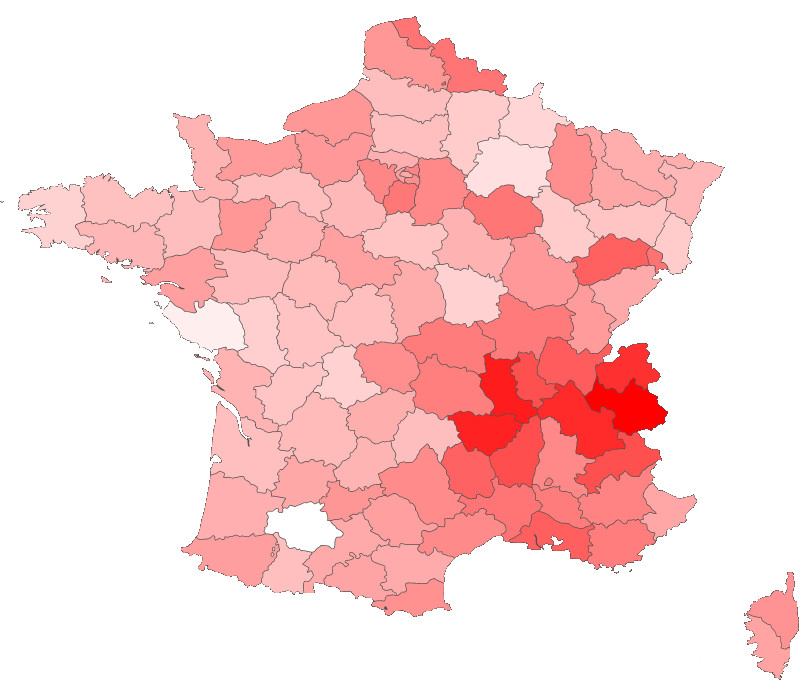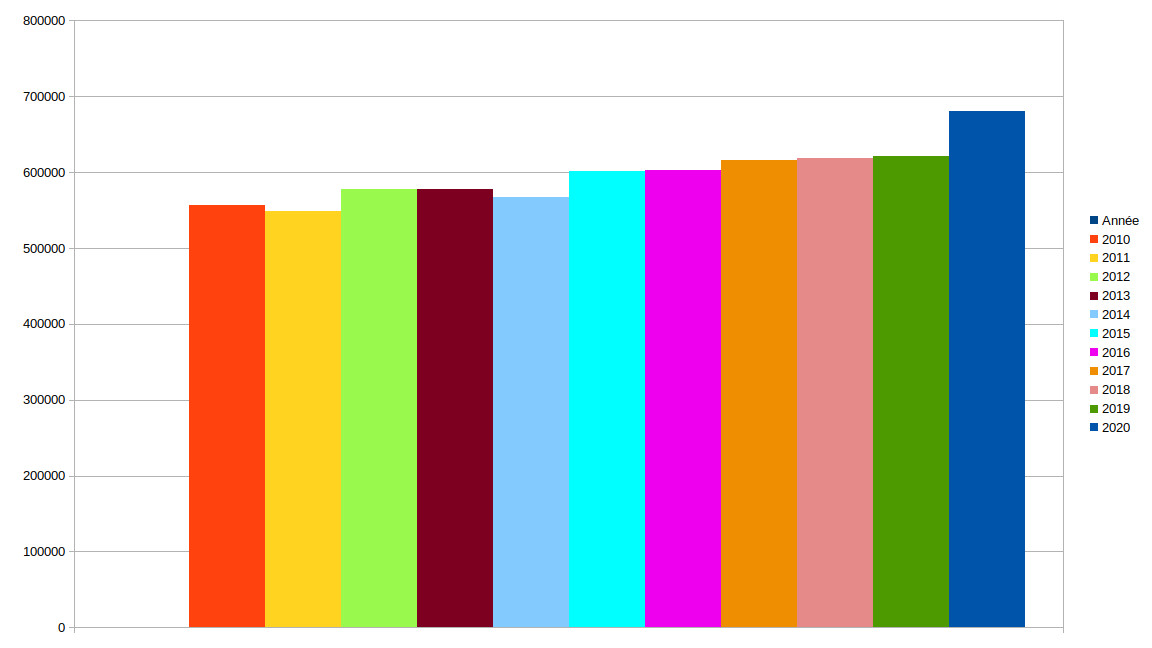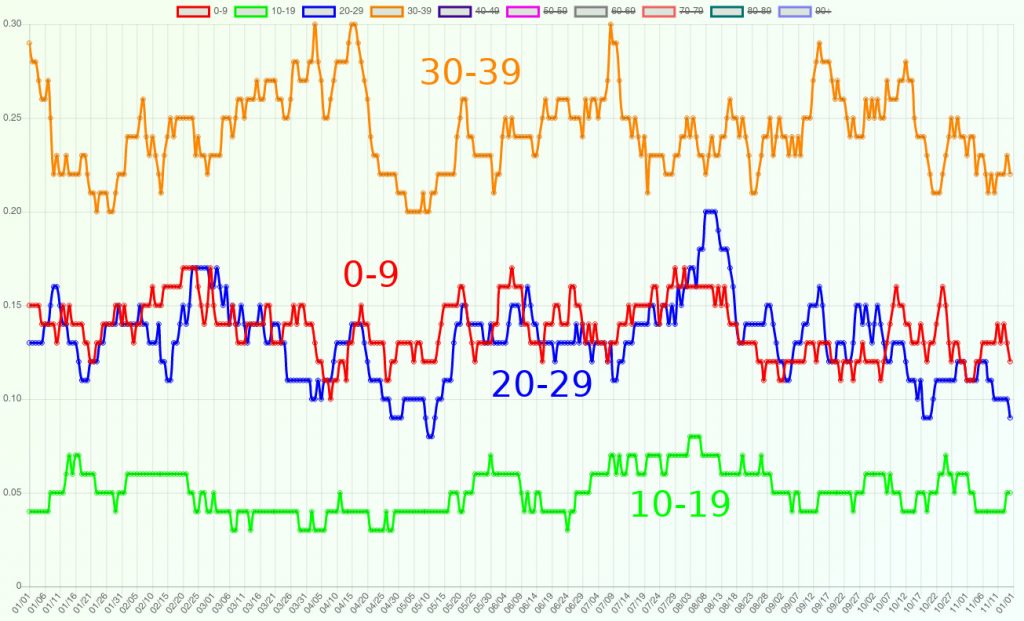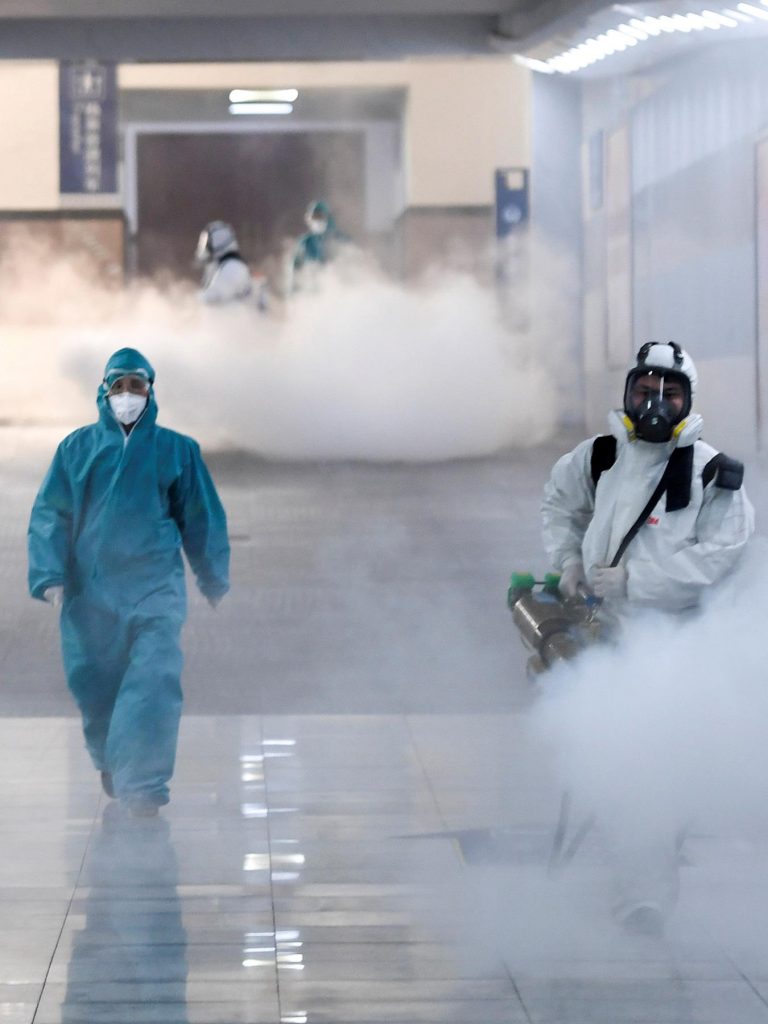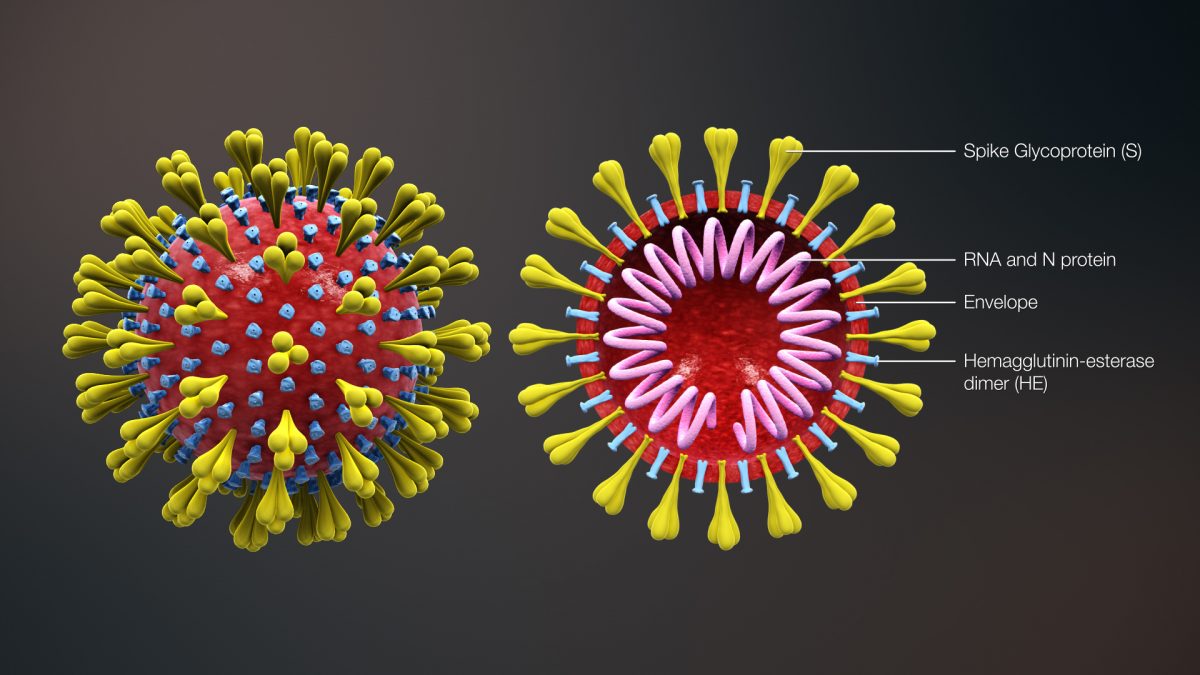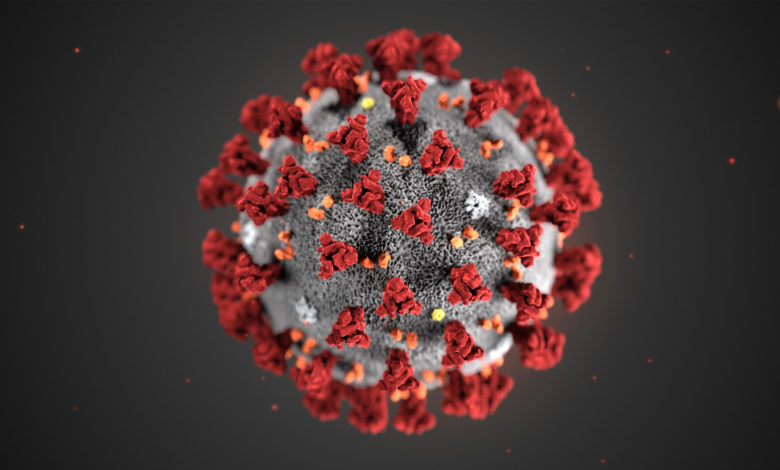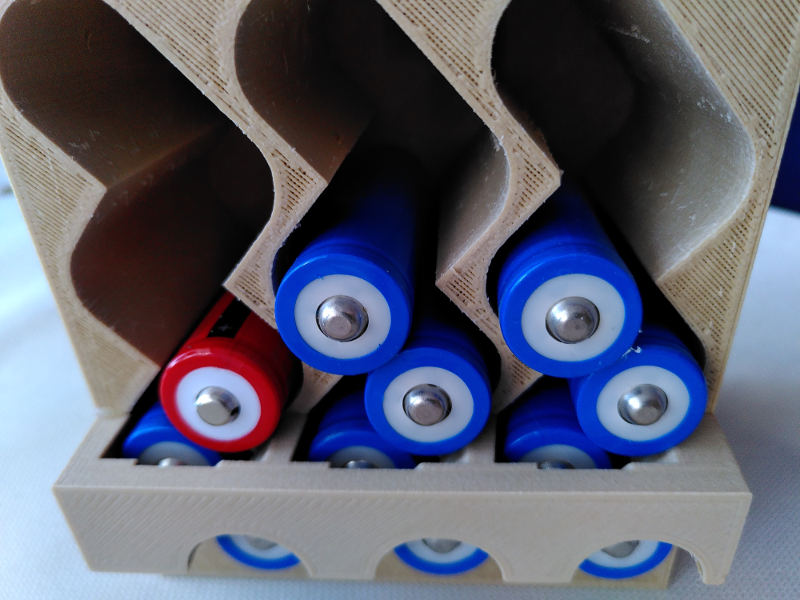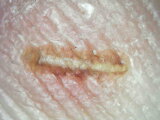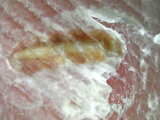(Cet article en français Originally posted 2020-03-23. Updated several times until 2020-04-23)
History of changes:
- homemade face masks (2020-04-25)
- some pets can catch the virus (2020-04-27)
- Italian curve, blood clots (2020-05-04)
- Blood type risks (2020-05-09)
- ventilation, studying sewage (2020-05-12)
- French azithromycin study and results (2020-05-13)
- cats and dogs update and vitamin D protection (2020-05-14)
- updates on my study of mortality in France (in French – sorry! 2020-05-20)
- natural origin of the virus (2020-05-21)
- HCQ Lancet Study (2020-06-03)
- D614G Mutation (2020-06-16)
- ACE2 importance in blood clotting (2020-07-19)
- Vitamin B. New cure using a peptide (2020-09-01)
- Masks and breathing (2020-09-04)
- Ayurveda and Covid (2020-12-27)
If you don’t have time, here is a short summary, (but you will miss important details as well as the humor).
Introduction
This is probably my most important post on this blog so far and for times to come. I believe it can save lives. Information is power. And power is in our hands right now. It might even take you an hour to read this (and have a good laugh sometimes). However, you will learn crucial information and will get a general picture of the situation. This post is the result of weeks of research.
Besides, I will keep things as easy to understand as possible and will avoid complex scientific explanations. I think anyone can read and understand everything I will put forward.
What you will find in this article
So, is this “pandemic” just another flu, a big hoax, or is it something you should pay attention to? I will not give you the plain answer, but rather some facts so that you make up your own mind.
Here is what you will find in this post:
- general knowledge about the virus, symptoms, contagion rate, death rate, risk factors, etc. One risk factor that receives very little attention so far but which I believe is absolutely critical is smoking. Read on.
- cures or vaccines we can expect,
- potential impacts on the economy and distribution chains,
- what our governments can do,
- things you can do at your individual level to protect yourself and others (well, should you?): protective gear, cleaning, dealing with confinement, keeping your immune system high, etc.
Disclaimers
I will sometimes use funny pictures to illustrate my words. This does NOT mean that I take the current situation lightly. Just remember that laughter is your best medicine in these highly stressful times.

I am NOT a medical doctor or even a nurse, I am simply a computer engineer with good medical/health knowledge and a big love for numbers, but that’s it. One of my passions is to analyze things my way, sometimes totally contrary to global trends. Take what I write here with a grain of salt, although most of it is already well documented. I also have to thank my wife, who has some medical education, for her invaluable contribution to this article.
In these troubled times, there is a lot of information going around, and it is difficult to triage everything as our knowledge of this virus is evolving very rapidly. Although I have gathered this knowledge from many (and contradictory) sources, there might be some mistakes in this post. Keep your eyes open.
All this said, here we go.

What do we know about this virus?
Let’s be honest. Not that much since it just came out a few months ago.
It is in the family of “Corona-Viruses”. This family includes some viruses that cause the common flu, but also SARS and MERS.
This article is only about the current corona-virus pandemic, called Covid-19. It is an illness caused by a virus called SARS-CoV-2 (SARS since it is a derivative of SARS, Corona Virus 2, “SARS” sometimes being called “SARS-CoV-1” in the scientific community to distinguish those two forms).
Symptoms

The symptoms are generally a little different from a “normal flu”. It is reported that high fever is the most common symptom, as well as a dry cough and sometimes headaches. Half of infected people also have digestive problems, especially loss of appetite. Of course, for more serious cases, severe respiratory problems ensue. Those turn into pneumonia when the immune system gets overwhelmed.
However, there are also some less common symptoms that resemble a flu, such as muscle pain, diarrhea or a running nose. Some report losing their sense of smell or taste, and especially the taste of salt. There are also reportedly many cases of people who don’t even have a fever but are strongly affected and need hospitalization. Some dermatologists also speak about skin rash or chapping.
This means that symptoms alone are not enough to draw any conclusion. Only a certified test can assess whether you have this particular virus or not.
Besides, many people seem to also be asymptomatic, especially among younger people. This complicates things, since these age groups may carry the virus without even noticing it, thus silently infecting others.
However, people who do get sick generally report more serious symptoms than what they commonly experience with a flu, even if they don’t necessarily need to go to a hospital.
Contagion rate
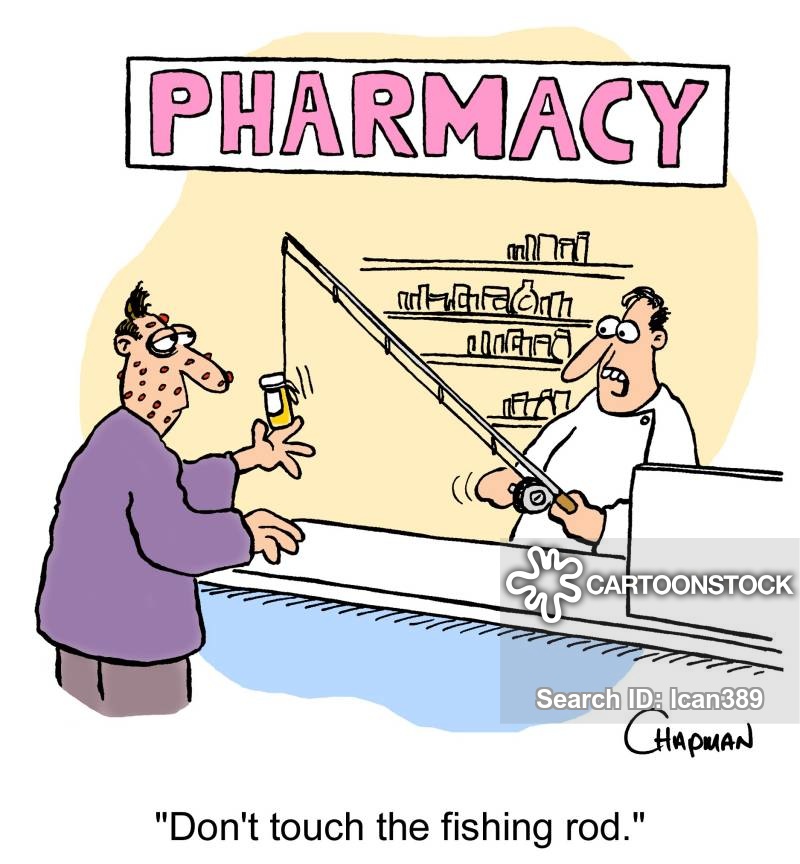
It is absolutely certain that this virus is extremely contagious. This can be directly inferred from its fast growth worldwide. Besides, there are also numerous stories of doctors and nurses which show that they need full gears in order not to get infected.
It IS extremely contagious…
A French doctor was summarizing it like this to his own colleagues: “in a hospital unit that is not following extremely strict confinement measures, if you suddenly find that one patient is positive to Covid-19 then you can immediately assume that any patient who shared the same room is positive as well without even bothering to test them, as well as any medical personnel that came into the room without protective equipment”. It is also becoming very clear that anyone who is positive in a household will systematically infect other people in that household.
… but we don’t know exactly how much yet
So yes, it is extremely contagious. However, it is still difficult at this stage to calculate the actual contagion rate. Especially, this strongly depends on the social behavior of different cultures. A typical reported progression is the doubling of the number of cases in sometimes 2 to 3 days, sometimes faster than this and sometimes slower.
Doubling might not sound so bad. The double of 100 is 200. Quite small, right? But the progression goes like this:
| 1 |
3 |
5 |
7 |
9 |
11 |
13 |
15 |
17 |
19 |
| 100 |
200 |
400 |
800 |
1600 |
3200 |
6400 |
12800 |
25600 |
51200 |
So, if you double every two days, starting at 100 brings you to a HUNDRED THOUSAND in 20 days! 3.2 million in a month. This is the power of exponential progression. Again, the virus sometimes spreads slower than this, but it gives you an idea of its potential.
Who is contagious?
At this point in time, we can only say that ANYONE, regardless of age or current symptoms (or absence of symptoms) can be contagious.
In South Korea, they have systematically controlled large portions of the population, which gives us an insight on which populations may spread the disease faster than others.
By contrast, in Italy, they mainly tested people coming to hospitals or people who are at risk. So we see that those who are getting more complications from the illness are not necessarily those who are a carrier for the virus.
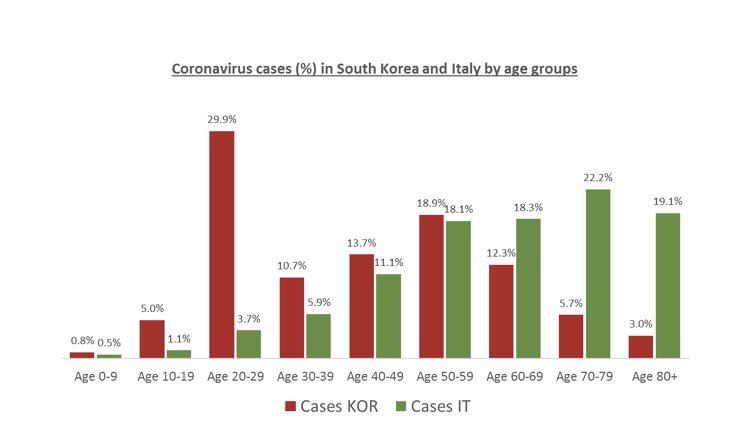 It appears very clearly that:
It appears very clearly that:
- the huge red spike in Korea shows that people in their 20s tend to carry the virus far more than any other part of the population, I believe this is mostly due to their social behaviors, but we certainly cannot exclude that some biological factors may also play a role,
- from the green bars on the right for Italy, we know that people older than 40 are the ones ending up mostly in hospitals.
Conclusions
Youngsters, if you care for your parents and grand-parents, STAY AT HOME! Don’t gather physically with your friends, you have technology to keep in touch. Besides, “having a small chance” doesn’t mean “having no chance at all”. There are many reports of young people who get sick and hospitalized. In France, an otherwise perfectly healthy 16 years old girl died on March 26.
As for small children, it is difficult to tell so far. Maybe they were not so much contaminated because the schools were closed in places where there were outbreaks. It is also probable that their strong and young immune system kills the virus before it can replicate itself.
Current spread rate
Given the exponential progression we are witnessing almost everywhere around the world (except for a few countries which managed to contain it), it is very likely that it is not going to stop so easily. At the current rate, it seems likely that it will spread all over the world, infecting at least millions of people, if not tens or even hundreds of millions.
I am astounded to hear some people still saying that “it stopped in China”. Helloooooo! They have been confined at home FOR 2 MONTHS!!! That is how they did it. And I’m speaking about real confinement since even Big Brother could be jealous of the levels of surveillance achieved by the Chinese Government. Remember that anyone coming out without proper authorization was sentenced to JAIL. In a Chinese jail.
Predicting the future
I might sound like a very pessimistic alarmist. Unfortunately, we see the progression of this illness absolutely everywhere with exactly the same exponential curves, so it is very easy to predict what comes next with extremely simple mathematical models.
In early March, I posted on LinkedIn the staggering similarity of the French and Italian progression of the disease, France being late only by a week, and I predicted exactly what was going to happen weeks later in France. Some people will argue that “the virus doesn’t know math”, but I do know math and how to model the exponential progression of a contamination process. There are actually very very few variables so prediction is quite easy. Others have done the same predictions and the actual data is confirming all the predictions day after day.
This is what makes Covid-19 extremely dangerous. Although it does have a quite low mortality rate compared to other similar corona-viruses, it spreads much faster. That’s always a dilemma for infectious diseases: if they are too lethal, they die off before being able to infect a large portion of the population ; on the other hand if they are not lethal enough, they may spread a lot but not make too much damage, like a common flu. Let’s remember that the “common flu” causes a staggering number of deads every year, several hundred thousand people worldwide.
This particular virus seems to have found a dangerous compromise between speed and mortality. If we were to release it without slowing it down, it is quite clear that it would definitely surpass the deadly score of the flu…
How it spreads
Air
Although, at this stage, it is difficult to know precisely how it spreads, it is assumed by most health professionals that the main vector is air, especially droplets coming from infected people’s mouth. These droplets can stay for a while in the air, but they eventually fall down to the ground. How long they stay depend on many factors, including the ventilation of that place. It is assumed that non ventilated areas present more risks that open places.
Besides, most ventilation systems in big buildings recycle air. It is the case, for instance, in malls, hotels, office buildings, etc. The problem is that those systems can spread the virus in other parts of the building.
So someone breathing the same air with an infected person gets infected very easily. To realize how easy this is, let me offer you this little thought experiment. At some point in your life, as a non smoker, you have probably met smokers. How many times have you smelt the smell of cigarettes? If you did, then you breathed the air that was in their lungs moments before. It is that simple. This can give you an insight on how much air we actually share with others, all the time.
It is still controversial whether smoking makes spreading of the virus easier. Some believe that the virus could attach to the tiny particles in smoke, just as it does in little droplets. But this theory is yet to be proven.
Surfaces
However, the virus can also spread from surfaces in the environment. But as any virus, it doesn’t survive very long without any biological support from a host. Initial research has shown that it could survive up to a maximum of a few days, especially on steel and plastic. But those two materials are everywhere in our modern environments. In addition, the virus can also survive up to a week on the outside surface of surgical masks, so one should be very cautious not to touch that part along with thorough hand washing…
Besides, some stories such as the one from teams on the cruise ship Diamond Princess, have discovered traces of the virus’ RNA 17 days after the infected passengers had left (whether they had symptoms or not – which confirms that an asymptomatic person can be contagious). Whether that RNA was still protected by its envelope was not disclosed, but caution should definitely be the master word here.
To keep it simple:
- an infected person touches his mouth or nose then touches something, or simply sneezes or coughs and the droplets coming from the mouth land on an object,
- somebody else touches the object with their hands,
- they touch their face (mouth, nose or eyes) => they are contaminated.
However, this may not be the main propagation vector – it all depends on how much we focus on… washing our hands. The chance of being contaminated depends on the quantity of the virus you are getting exposed to.
Feces
Note that it can also spread from feces, especially when patients are already very sick. Wash your hands after coming out of the toilet. And keep that habit when the pandemic is over. It is basic hygiene.
I mention this for two reasons. The first reason is that shared toilets (public ones, as well as those in shared areas such as offices) can be a strong contamination vector. Those are enclosed spaces, we touch pretty much everything…
The second reason is that, although feces can carry the virus, its form is generally non contagious. That’s because we generally find only the virus’ RNA there. This has an interesting side-effect. By analyzing the level of contamination of sewage, it is possible to assert the level of contamination of a geographical area. Smart!
Can it reproduce in the environment?
Remember that a virus is very different from a bacteria. A bacteria is a full grown cell that can reproduce itself in the environment if it finds nutrients like sugar.
On the contrary, this virus is simply a shell containing some RNA. It is not a “living thing”, per se. Thus, to replicate itself, it needs human RNA, so it needs living cells to spread.
RNA is very similar to DNA, but instead of a double helix, it is a single chain.

Heating the virus to kill it?
Some French researchers have examined the protocols used by the medical industry to disable the virus. Their conclusion is shocking: even after 1 hour under 60° C (140° F), some viruses are still active, especially in a dirty environment. To effectively kill the virus, they recommend a 92° C (200° F) temperature for 15 minutes.
This can seem quite scary. However, bear in mind that we are talking here about samples containing high concentrations of the virus. It is especially true as it is previously kept and cultured in an environment which is designed to conserve it in order to analyze it. Those protocols are also designed to make sure that the virus is not going to spread out for a lab. Or contaminate someone who manipulates those all day long. In real life, unless meeting someone who repeatedly spits on your soup, you shouldn’t be in contact which such contaminated environments.
Besides, they note that the 60° C (140° F) protocol already kills 99.99% of the viruses and roughly leaves 0.01% active. That is quite small. The 92°C protocol leaves less than 0.001% active. Although this is a significant difference when studying the beast, it doesn’t really tell anything for real life.
It is still safe to assume that cooking a meal is effectively destroying most of the virus for “normal” situations.
Impact of climate
At this point, it is not clear yet how much weather conditions (temperature, humidity) play a role in the transmission of the virus or on its survival time in the environment. It is still too early to have a good insight. This virus has been thriving in cold and dry environments (Wuhan…) as well as warm and wet ones (Singapore, Malaysia…). Besides, all data on the infection rate and casualties is so unreliable and of diverse quality from one country to another that it is quite impossible to analyse anything so far. With the lockdowns in place with very various standards, it will be even more difficult to analyze that data.
Incubation period
The normal flu has an incubation period of 2 to 5 days maximum. In other words, people generally get clear symptoms (fever, running nose, cough, etc.) within 1 or 2 days after being infected.
Covid-19 is extremely different in this regard. The incubation period ranges from 2 to 14 days, and it could actually be even longer, according to some studies (some report up to 20 days, and a recent Chinese finding reports someone having a new strain of the virus for 49 days!), but we can’t be sure of it yet. In general, it takes 5 to 6 days for people to develop the first symptoms, and most people develop symptoms after a week.
This means that infectious people can wander around undetected for long periods of time, which explains why big clusters of sick people appear suddenly in places where there was previously no occurrence of the virus. It is logical. When you have clear symptoms of the flu, you stay at home and don’t infect others, for everyone’s sake. Besides, we naturally tend to stay away from people who look sick, but easily stick together with someone who is apparently healthy.
This creates a time bomb that suddenly explodes in your hands: from just a few cases, you suddenly jump to hundreds then thousands of cases in a matter of days or at most weeks. That’s because these people were infected one or two weeks ago, undetected. And by the time you realize what is happening, you are already overrun and it is too late.
Impact of a long incubation period
What we believe
The impact of such a long incubation period is very disturbing. We have this idea in mind that if we start isolating ourselves today, the curve of reported sick people will come to a halt right away:

Although this could be quite true with a flu, which has an incubation period of just 1-4 days, it does NOT work that way at all with Covid-19. Sick people are generally diagnosed only when they experience the first symptoms. But with Covid-19, remember that this can happen up to 2 weeks AFTER being contaminated. This means that on the day you isolate, people stop contaminating each other, but those who were contaminated a week ago or even two weeks ago will start getting symptoms TOMORROW.
What really happens
The logical conclusion is that the curve will not start bending for at least a WEEK and probably something like two weeks, since the contaminations have already happened long ago and the symptoms will only appear in the coming weeks.
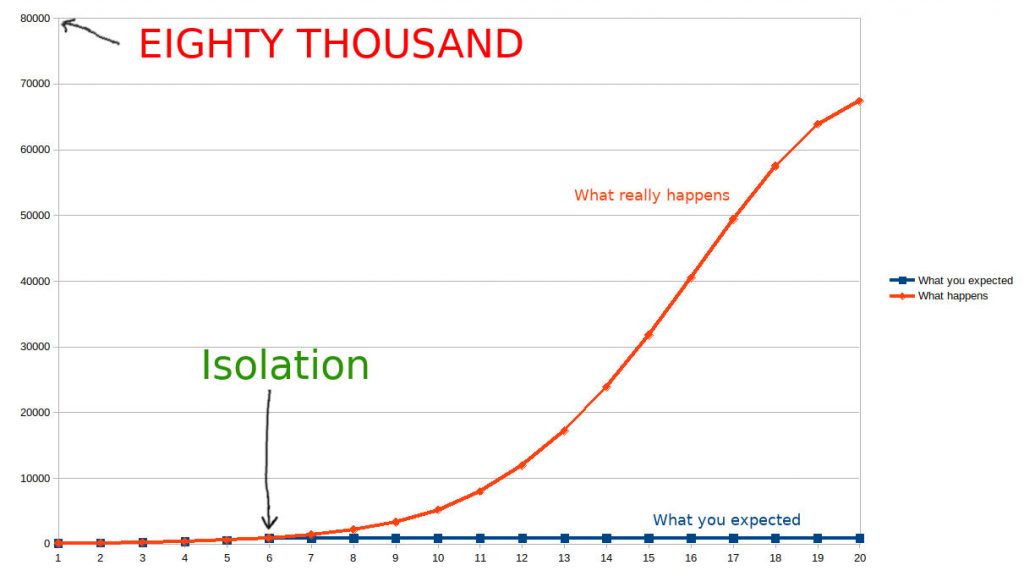 And this is a quite optimistic modeling (using only 1.5 contamination rate, whereas the actual one might be much closer to 2).
And this is a quite optimistic modeling (using only 1.5 contamination rate, whereas the actual one might be much closer to 2).
All this is not pure speculation.
Actual data
This is exactly what Italy is experiencing right now. They have been isolating for almost 2 weeks and they are barely starting to get a positive effect of the isolation (if we do believe that the numbers given by the Italian Government are correct – they might be highly underestimated).

The curve finally started bending after weeks of confinement. It is probable that the confinement was not fully respected. We can see that from the mayors who lost their patience with their citizens. I am afraid that, by doing so, the only thing did doing is delaying the bending of the curve and increasing the number of deads.
Sick and contagious period
As a joke, I generally say that, when you have the flu, you can pass it in a week without medicine and in 7 days with medicine. That’s how long a flu lasts, whatever you do. It can be shortened with some simple natural health remedies such as essential oils, but that’s it.
Covid-19 lasts much longer. Up to 2 weeks and sometimes even more. The full contagious period can even extend to 5 or 6 weeks:
- 2 weeks of incubation,
- 2 to 3 weeks of full sickness (for those who do recover – sometimes with long lasting lung damage),
- an extra week after recovery.
Yes, you read that right, even though you think you recovered, you can still be contagious until the virus totally disappears from your body. Only a test can tell whether you still have the virus or not. Symptoms are not enough.
Hospitalization rate
Just like the death rate, it is very difficult to estimate an accurate percentage of “people who catch the virus and need hospitalization”. But from what we have seen in Wuhan and in Italy, when the epidemic reaches a large number of people, healthcare systems get rapidly overwhelmed despite building temporary hospitals in a rush.
There is some speculation that as many as 15% to 20% of affected people may need special care in a hospital. I believe that the real number is probably lower, maybe between 5 and 10%, maybe even less. But remember that 5% of 1 million is still 50000 people.
Impact on healthcare systems
Although this aspect is largely downplayed so far, it is probably the most critical part of this illness.
As long as hospitals don’t get overwhelmed (like in South Korea or many other countries around the world so far, and even mainland China at the exception of Wuhan), the death toll is low and quite “comparable” to a “normal” seasonal flu even if it is much higher (probably 10 times higher).
However, as the illness spreads very rapidly, it tends to submerge local medical resources. When this happens, such as in Wuhan or in Italy, the death toll skyrockets. People die because they lack medical help, although they could have survived with the proper care. In Alsace in the east of France, nurses already report that they have to “choose” patients with higher recovery chances over others to decide who will receive a proper treatment.
Such is the power of very low percentages on very large populations. 5% of 1 million is 50000. And no country in the world has 50000 ICU (Intensive Care Unit) beds per 1 million population. Just to give you an idea, the US, one of the best in the field, has 347 ICU beds per million inhabitants. This is why we absolutely don’t want everyone to catch this virus at the same time.
In addition, when the healthcare system is already saturated, people who need it because of an emergency unrelated to the virus (accident, heart attack, appendicitis, etc.) cannot be taken care of correctly and will die, although they would have been totally fine with proper medical assistance. What about pregnant women right now who are due to give birth in the next weeks or months?
This is the deadly collateral damage.
Death rate
The death rate of an illness can be calculated by dividing the number of dead people by the number of infected people. Thus we need to measure these two numbers in a reliable way.
Unfortunately, the death rate is totally unknown so far, since numbers collected here and there are skewed and are subject to lots of different interpretations. In my opinion, it may range from as little as 0.5% of affected people to as high as 5 or 6%. In any case, it is certainly more severe than a normal flu, which is fatal for less than 0.1% of the infected. But it is very probably far less lethal than SARS, which has a death rate of roughly 10%.
Number of infected people
All those numbers depend heavily on how reliable the “total number of infected people” is. And in most cases, that number is totally unreliable:
- lack of accurate tests (some tests have a high rate of false positives – eg. people who are not infected but who are counted as infected – , and other tests have high rates of false negatives – people who are infected but return as negative in the test -),
- lack of testing altogether (such as France, for instance), which means that there are actually many more infected people than the numbers show, in any case, it is impossible (and it would be meaningless) to test the whole population,
- unreliable information and lack of transparency of governments who try to minimize the impact on their country in order to not take too much blame and responsibility (they will say that they wanted to avoid a national panic).
If the number of infected people is unreliable, then we can’t calculate a “mortality rate”. In the worst case, you test only the dead people and get a 100% mortality rate. And in other cases, you may actually not count people who died mostly from that disease but are not included because they were not tested. Any scenario results in totally unreliable data.
Number of dead people
Besides, except for the special case of accidents, people generally die of a combination of factors, not of one single health problem alone. So, how do you count someone who dies but had high blood pressure, diabetes, asthma, AND a flu? What was the most fatal in the lot? It is so easy to dismiss one factor in the final report.
The only reliable data we will be able to analyze in the future is the total number of dead people in each country and worldwide, regardless of the “suspected cause of death”. Unless WWIII unleashes until then, causing massive death tolls worldwide (just kidding… maybe), we will be able to assess the actual damage of this particular epidemic in retrospect compared to previous years.
Indeed, this is the only number that will represent the global impact, including collateral damage (like people who were in an emergency not related to Covid-19 but who couldn’t receive proper care). I will make a separate post to publish my own analysis for France in the coming months. It is still too early to do any analysis and it will probably take several months for the data to be available. Until then, the actual impact of the pandemic is quite uncertain.
We only know for sure that healthcare systems all over the world are starting to panic. In the city where I live, local health systems are so overwhelmed that I heard from a quite reliable source that they are thinking of giving up counting the number of people who call the local call centers with Covid-19 symptoms, since they are not able to take all the calls.
So, is this just a “heavy flu”?
It is still not clear how deadly this virus is. Some people dismiss it as “just a heavy flu that will clean the elderly – who are a burden to society anyway”. I find this position quite abject, but this is only my own judgement. Those are the same people who start swearing at you when you invoke euthanasia, which I believe can provide relief to patients who suffer heavily. But this illness doesn’t kill only old people. Many die although they did have a bright future ahead of them.
In any case, its impact on the general mortality in France is statistically significant. Just judge by this simple graph.
 Number of deaths per day in France, whatever the causes of death. Every curve represents a year, starting on Jan. 1st on the left and ending on Dec. 31 on the right. Two major events are visible: the red peak is the 2003 heatwave which had a tremendous impact, and the blue (unfinished) curve, Covid-19, which is surpassing all other “flus” we've seen in the past 20 years.
Number of deaths per day in France, whatever the causes of death. Every curve represents a year, starting on Jan. 1st on the left and ending on Dec. 31 on the right. Two major events are visible: the red peak is the 2003 heatwave which had a tremendous impact, and the blue (unfinished) curve, Covid-19, which is surpassing all other “flus” we've seen in the past 20 years.
If you know French, you can have a look at my articles on the study of mortality in France before Covid-19 and then with the first march/april data.
Let’s downplay the spread
So, let’s see what happens if we minimize it as much as we can. Let’s heavily downplay its spread and say it will infect only 5% of the population if we don’t do anything, which is an average for the common flu. Could this be likely? Not in my opinion, this is a ridiculously low estimate since the spread of Covid-19 is much faster than a common flu. But I can’t totally dismiss it. For France, this means that we would have 65 million × 0.05 = more than 3 million infected people.
… and downplay the people needing hospitalization
Now, let’s totally underestimate the number of infected people who need hospital care. From what we saw in China, Iran and Italy, the actual percentage of infected people needing hospital care probably ranges from 5% to up to 20%. Let’s just say that all those countries have been lying about the number of infected people, and the actual percentage is a mere 1%. 1% of 3 million is 30000. We don’t have 30000 hospital beds in France. We barely have 20000 (and as little as 5000 ICU beds). So even if you minimize this thing to extremely unlikely numbers, we are already in deep trouble.
Besides, by downplaying it, you are calling every medical doctor, every nurse, every healthcare worker in your country and other countries liars. And I’ve never seen a young nurse dying from catching the flu from her patients. I haven’t ever seen 3 doctors suddenly dying in France from the flu in a matter of days.
More realistic insights…
Finally, given the speed at which the illness progresses, it is totally unlikely that it would limit itself to 5% of the population. So this is a very ridiculous estimate. 10% is a more likely low estimate and, given the stealthy nature of the illness, I believe it could easily reach half the population or more if we don’t take very strict action.
However, some people who don’t “care about numbers” still seem to think that this is just a heavy flu. It is not. The common flu never kills so many people in such a short time, and we are still at the very beginning of the epidemic. Non standard flus, such as the “Asian flu” (a H2N2 type) in 1956-58 which caused around 2 million dead around the world, are more deadly.
Risk factors
Warning: note that these are only statistics, and applying them to yourself is not relevant. Sure, winning the lottery is not likely, but some people do win the lottery. Do the statistics apply to them? Statistics apply only to large numbers, but don’t apply to your particular case. So if you are “more at risk” doesn’t mean you’ll have problems or die, whereas being “less at risk” doesn’t mean you won’t end up in the hospital. Hospitals report that they have young people in deep trouble as well, although they are in a very low risk category. Don’t feel “particularly safe” or “oooh I will die” depending on statistics.
It goes without saying: the worse someone’s current health is, the more they are likely to die from Covid-19. Just stating the obvious. But let’s go ahead.
A list
Here is the list everyone is waiting for. Risk factors include:
- being old, especially over 70, but that generally goes with a deterioration in global health, so it is not necessarily the age itself which is to blame, but rather the other medical conditions that come with it,
- heart disease is a very high risk factor, as well as high blood pressure,
- diabetes is a risk factor,
- obviously, all respiratory problems, including asthma, are an aggravating factor with this illness, since it is mostly affecting the respiratory organs in the serious cases who end up dying, this is especially true as corticoids and many anti-inflammatory drugs cannot be used for severe Covid-19 patients and have been reported as an aggravating factor causing septic shock, but this still needs to be confirmed – if you are on corticoids, you shouln’t stop using them as this could cause your asthma to spike up, and you certainly don’t want that right now!
- smoking is a very strong risk factor, if you are smoking, NOW IS THE TIME TO STOP! The virus SARS-CoV-2 binds to ACE2 receptors, and these are especially high in smokers. I am quite surprised that very few people and articles speak about what I believe is one of the most important risk factors besides old age. Note that ACE inhibitors are an extreme risk factor as well.
- pollution is also a big risk factor as it deteriorates the lungs,
- French doctors have observed that obesity is an aggravating factor as well, but again that generally comes with high cholesterol, respiratory problems, and diabetes… so it is not surprising, but yet important to know.
Extra potentials
- a Chinese study reported that men are more at risk of developing severe symptoms than women, they comprise almost 2/3 of the dead in China although men and women were equally contaminated, researchers are not sure why, but I have a guess : men smoke far more than women (in China, 50% of men smoke whereas only 3% of women do), and I believe this alone explains the difference,
- women may have better defenses against severe forms of Covid-19, because their immune system knows how to deal with the bacteria Prevotella, a bacteria which seems to interact strongly with the virus,
- blood type may play a small role ; it is reported that, in the Wuhan outbreak, blood type A+ was more at risk of developing complications, whereas type O seemed to resist better to the infection ; it is confirmed by a hospital in New York, but there isn’t a huge statistical significance for these results,
- Rhesus negative is usually stronger against viruses than Rhesus positive, but we have no idea if it is also the case with this particular virus. This also implies that if you are A-, then you actually may not be as much at risk as A+. In any case, it doesn’t seem that blood type can be strong risk factor.
- Liver problems, especially due to use of drugs.
Let’s temper things…
Again, if you are labelled “at risk”, these are only statistics. Note that the accumulation of risk factors is a risk factor itself. This means that an obese person with high blood pressure, respiratory problems and diabetes, is definitely much more at risk than someone who has only one or two of these conditions. It seems pretty obvious, but the numbers, especially in Italy, confirm that assumption very strongly.
We are repeatedly reminded that younger populations (especially under 40) have a very low risk of developing a serious form of the illness. But there are exceptions, and French nurses insist that they currently see many cases of young and normally healthy people who are being admitted into hospitals with very serious conditions. And we have no idea why they develop symptoms while others don’t. In short, don’t feel safe because you are young (which in any case would be extremely selfish toward your elders, wouldn’t it?).
Do sick people become immune?
We actually don’t know for sure how everything works out for now. It is certain that some people develop some antibodies, but we don’t know yet if those who didn’t have symptoms systematically develop enough of them.
In fact, some people got sick, recovered, and got sick again. It is not yet clear if they got reinfected from a new source or if they actually never got rid of the virus and only relapsed from their initial infection. This would mean that they never built enough immunity.
As for long term immunity, that is yet another challenge. As the virus mutates over time, it seems quite clear that even if people may become immune to a certain strain, they will still be infected by others, as it happens with the common flu from one year to the next.
Where did it come from?

We will probably never know for sure in our lifetime where the virus came from.
Natural origins
It is highly probable that this virus is a result of natural mutations. Here is for instance an article (brace yourselves, it is quite technical) which clearly explains why human tampering is quite unlikely.
Another study in May 2020 found another virus in bats which is closer to SARS-CoV-2 than any other virus we found so far. It is very possible that, by analyzing more and more viruses found in nature, we might find one day the direct ancestor of SARS-CoV-2.
However, there is also the time factor. Although natural mutations can absolutely have lead to SARS-CoV-2, if too many mutations happened at once, it could point out a human manipulation.
In this regard, I believe that this virus might have circulated among human populations in China (and even outside Wuhan) a long time before the pandemic outbreak. Indeed, it could have been present in human bodies without doing much damage, thus circulating undetected. Until it finally found the deadly mutation we know today.
If we did manage to get to the source of the epidemic (which might actually not be a pangolin, since no pangolin has been found with this particular virus to date), it would be extremely useful to be more proactive in the future. Maybe we could even prevent any new epidemic from happening with some simple measures.
Conspiracies
On the other hand, there are many people who suspect that the virus could be linked to lab work. Early papers at the beginning of the epidemic have suggested so, but they have been quite controversial (and not as scientific as the previous paper I mentioned).
The city of Wuhan, in which the first cases appeared, hosts several labs working on viruses, including corona-viruses. So it cannot be totally excluded that humans may have played a part in this, voluntarily or not. However, any “information” in this matter is highly susceptible to manipulation. So I will not comment further. It is so easy to point fingers without proof, and even proof can be faked. Remember Colin Powell shaking that “Anthrax” flask at the UN (just imagine what would have happened if he had lost his grip at that moment… whoooops!).

In any case, whether this virus mutated naturally or was engineered by the Reptilian Illuminati Caste due to Agenda 2030 is not much of a concern for you and me – it is circulating around anyway. And it is happening worldwide, if it doesn’t affect the place where you currently live yet, it will probably come to your surroundings at some point.
Cures
As I write this article, Covid-19 has been around for barely 4 months. It is so early after the appearance of the virus that it is still very difficult to know what strategy will be best against the pandemic. However, the whole scientific (and especially medical) community has shown us that our current technology is very powerful and fast. In just a week after the first outbreak, they had sequenced the genome of the virus. Many other teams have done so since then, helping us understand a little bit better this tiny hairy threat. However, the path to cures is still not here yet. A cure can actually be found suddenly, as the whole international community is working on it feverishly – pun intended. 🙂
Besides, we have a better understanding of how the virus attacks the body. It seems to attack various areas in different ways. For instance, it is getting more clear that the blood circulation vessels are attacked.
Interference and lobbies
It is very obvious that the first team which patents a working vaccine or novel medicine to treat Covid-19 will have found the goose that lays the golden eggs. Thus, it is conceivable that pharmaceutical companies and labs are currently in a fierce competition, in a race in which all kinds of dirty tricks can be played. This can unfortunately interfere with the best curse of action. If a cheap drug could solve the problem, that would certainly upset a lot of greedy people…
Vaccines
Don’t wait for a vaccine. All health professionals agree that vaccines will not be around for at least a year, probably two years, and we won’t really know their effectiveness for the next few years. Maybe the virus will even have disappeared until then, as the Spanish flu did.
Remember that flu vaccines are actually quite ineffective (they protect at most 60% of the vaccinated people, sometimes as low as 10%). In the meantime, their contents, including heavy metals and aluminum, can be quite harmful for your health. But that is another topic on which I don’t wish to elaborate. Sometimes, vaccines can really be effective and have a positive effect. Let’s wait and see.
Medicine
A challenge
The Chinese, who were affected first, were confronted with a new disease and nobody in the world knew how to deal with it. They tried everything they had around them which they knew was effective against similar viruses. And they did find some interesting solutions.
Of course, the number of possible treatments is totally mind-blowing and it is absolutely impossible to follow all the research that is done these days on Covid-19. Just to show the range of possibilities, the Koreans recently discovered that some probiotics could have a very positive effects against the virus (we’ll see further in this article why probiotics are relevant) – probably more to come in the next months as other teams around the world are also working on probiotics. Everything is possible!
Some others are treating patients with the plasma of recovered people. Another is using a peptide in a simple nasal spray to block the infection of the lungs by SARS-CoV-2.
This is also when technology can help. A supercomputer has been looking for molecules that could be used to block the virus from spreading in the body. As you can see, every resource we have is thrown at the problem right now, so anything is possible.
Antivirals
Some antivirals can contain the growth of the virus in the body, providing some help to the immune system. But it is still too early at this stage to draw strict conclusions. China has tried many, with mixed results. The whole medical world is currently racing against the epidemic. Who will win? Only time will tell. This is typically the time for “sensational news”, but just beware of click bait titles. 🙂
Chloroquine
!!! Warning !!!
YOU SHOULD NOT AUTO-MEDICATE WITH CHLOROQUINE. There are known complications and interactions with other drugs and health conditions. Besides, overdose can be fatal. Use chloroquine only under the supervision of healthcare professionals.
Foreword
The way chloroquine works is by enabling zinc to get inside the cells. In turn, zinc stops the virus’ RNA from replicating. If you’re interested about the details, read this article on this topic. You NEED zinc for chloroquine to be effective. Although nobody speaks about this aspect, I believe it is important to know.
Some other studies have shown that chloroquine can also play a minor role in preventing the virus from attacking hemoglobin.
First Trials
A first team found early on that chloroquine had a positive effect against SARS-CoV-2 in vitro (in a glass box, not in a human body). However, such effects have been also found in vitro for previous corona-viruses, but then the clinical trials didn’t find any evidence that it was actually curing people, in vivo, and studies on mice failed to prove any efficacy of chloroquine against SARS.
However, early on, the Chinese have used Chloroquine Phosphate on a trial on 100 patients. Results seem to be promising, but this is still a very small study and other studies have shown that we DON’T have a perfect cure for Covid-19!
Further tests
A French doctor conducted a trial on 20 patients and then 80 patients with hydrochloroquine, as well as an antibiotic which has antiviral properties, azithromycin. The combination of the two seems to get promising results. However, there are many red flags in his study, which didn’t respect scientific standards at all (some patients are not included the final results including one who died, extremely poor methodology, inconsistent results, no control group, etc.).
An American doctor also claims that he treated his community with Chloroquine/Azithromycin/Zinc Sulfate with extremely good results (notice, ZINC supplements…), although we should be careful since this is not a full study. However, given the very little side effects of this treatment and given the results, we should certainly investigate and use it more and more if results prove positive.
Finally, another Chinese randomized clinical trial with a control group seems to have very promising results. But as the authors of the study write very humbly: “However, Large-scale clinical and basic research is still needed”.
Safety and efficacy
In any case, if chloroquine proves to work, its huge advantage is that it has been around for decades, so we know how the body reacts to it quite well. As it is a common antimalarial drug which is widely available throughout the world, this could give healthcare systems some kind of relief.
However, we already know for sure that this medicine doesn’t work at all when the symptoms become severe. Once ventilation is needed, the virus is not the main cause of health problems anymore. Thus, it is essential to do massive testing of people who have symptoms, who are at risk, and who may have been in contact with other infected people. This way, we can catch people who are infected early on and maybe treat them if chloroquine is found to be effective (which is yet to be proven on a larger scale), or with any other medicine.
Lancet Study
The reputable “The Lancet” published a study on chloroquine using Big Data. The claim is that they collected tens of thousands of hospital records and compared patients who received chloroquine with those who didn’t. The conclusion of the study is that chloroquine, whether associated with an antibiotic or not, is more deadly than any other treatment.
I read that study, and I have a lot of red lights coming up. Many things in the study itself is raising questions in my mind, since they don’t explain how they exploited the data.
But there is more. Where the data is coming from is even much more interesting. My point of view? This is just a hoax. Chloroquine is cheap and would hurt many highly influential labs if it were to be the main treatment worldwide for Covid-19. Here is an excellent investigation on the company that “provided the data”, Surgisphere. The world of science publications is broken. This is just one other example.
My own conclusion
The way of communicating of this French doctor is probably not the best.
Announcing in a YouTube video (which has been taken down since then) “Coronavirus and Chloroquine: Game Over” in early February when so little data was available is not a responsible thing to do. By saying that, people (especially politicians) believe that nothing needs to be done against the propagation of the epidemic. As a scientist, it is our duty to use the precautionary principle and not jump to immediate conclusions when so little data is available. Besides, claiming that confinement is “unnecessary” is again not a good signal while in the meantime many hospitals are already overwhelmed and thousands have already died.
Until we have larger studies, we have no idea how this solution will help when it comes to millions of infected people. Do we really want to get to that point? Isn’t prevention better than curing? What if a new strain of the virus develops resistance to Magical Chloroquine? What then?
In any case, we have to try this out, chloroquine, azithromycin, zinc, or anything that shows promising results. Not trying it is criminal: people are dying right now and we have no time to lose. But overdoing it in the media is dangerous and already killed people.
Antibiotics
Tests
Although Pr. Raoult is only speaking about chloroquine, some others think that it only plays a minor role and that azithromycin is actually the key of his cure. Following those doubts, some French doctors tested azithromycin on its own, with excellent results. Another study in another French hospital is confirming the excellent results brought by azithromycin on its own, which resolves the matter, from my point of view.
 HCQ=hydroxychloroquine, AZI=azithromycin, SOC=something else
HCQ=hydroxychloroquine, AZI=azithromycin, SOC=something else
This is not a huge surprise. Azithromycin has been shown to be effective against the H1N1 virus as well.
Besides, other French doctors have started using other antibiotics of the same family (Macrolides) with outstanding results on a large number of patients. Some of them report that patients who had already reached very severe conditions have been cured in a day. But these are only sparse experiments and we definitely need real scientific trials to prove the efficiency of those treatments. However, the huge accumulation of impressive results should leave very little place to doubt at this stage. We should heavily treat people with azithromycin, which would easily avoid complications for the vast majority of infected people.
Unfortunately for the pharmaceutical industry, those molecules are also well known and wouldn’t result in a very lucrative patent. This is why the State hospitals should test them urgently and do the job of the private labs, which won’t spend a penny on something that won’t bring them a fortune in return.
A possible culprit: Prevotella
SARS-CoV-2 likely has a very convenient friend. Or very inconvenient, it is a matter of point of view. It might be working in pair with a bacteria which is present in our gut, Prevotella. The virus can invade the bacteria, hide in it undetected, use it to enter cells, and it is finally the bacteria which causes SARS. It is a consensus among doctors, the terminal phases are no longer due to the virus, but to bacterial infections. Besides, in the Wuhan outbreak, Prevotella was found literally everywhere.
Conveniently, that bacteria can actually limit inflammation in early stages of the illness. This could explain why the incubation period of the virus is very long. But when it starts growing near the lungs, the bacteria causes a storm of cytokines, which cause the inflammation of the alveoli. So it is the bacteria which causes SARS. This is why antibiotics work in that phase.
Besides, Prevotella is well known by dentists and other practitioners. Unfortunately, it is relatively resistant to many antibiotics. However, some combinations can help fighting it. And some studies show that Azithromycin is active against Prevotella.
Confirmations
A few other hints:
- young children have very little Prevotella in their gut, which would explain why they rarely develop complications of Covid-19, since the virus could never thrive in their body due to the absence of its friend,
- smokers have higher numbers of Prevotella in their gut than non smokers… and smoking is a risk factor,
- an attack by Prevotella can also be explained for diabetic people who have more Prevotella,
- as for obese people, they generally have chronic inflammation, and the Cytokine storm is attacking them on an already very overwhelmed terrain…
- Prevotella is also a co-factor of hypertension, which is on of the primary risk factors of Covid-19…
- this would easily explain why some people who cured got sick again: the virus was just “hiding” in Prevotella inside their gut.
It looks like the puzzle starts making sense.
Probiotics
At the beginning of the section about cures, I was mentioning that the Koreans are researching probiotics as possible cures for Covid-19.
Now it starts making more sense, doesn’t it? Because Prevotella is one of the bacteria in our gut, it seems logical to want to avoid it colonizing the colons and then the rest of the body. So, as the gut flora is just a big mix of competing bacteria, the simple act of restoring balance against Prevotella is a perfectly sensible thing to do.
Blood oxygenation
The Chinese have reported very good results by oxygenating blood directly. A team in Nantes (France) is reporting also good results with a similar technique. This is probably not because of reduced lung capacity, but rather because SARS-CoV-2 attacks hemoglobin, thus preventing the transport of oxygen in the blood.
Blood clots
Blood clots are increasingly linked with Covid-19. Those cause strokes and kill organs which are not supplied with oxygen anymore.
This happens because SARS-CoV-2 binds with the ACE2 receptors very effectively. When it is circulating in the blood, it contaminates first the inner layer of the blood vessels. This layer is extremely important as it ensures that the blood flows smoothly in the vessels. Unfortunately, this layer can get destroyed by the immune system because it has been contaminated. Once the blood is in contact with other layers, coagulation starts as the blood believes it is not in a blood vessel anymore.
Besides, the ACE2 receptors are also used by the body to regulate blood pressure. When those ACE2 receptors are overwhelmed, it causes a general tightening of blood vessels, which makes it even more difficult for the body to distribute oxygen and get rid of CO2.
A Canadian doctor, Dr Penninger, is testing a molecule which looks like ACE2 receptors and acts as a lure. The virus binds to this molecule rather than to the cells, which seems to have quite promising effects. Hope is on the way.
Traditional Medicine
At the heart of the health emergency crisis, the Chinese used Traditional Chinese Medicine very successfully to relieve patients. Traditional medicine showed effective, reduced the recovery time of infected people, cured those with mild symptoms before they got worse, etc. This took a lot of the burden away from already overwhelmed doctors and nurses, thus drastically reducing the impact and death toll.
It will be interesting to see how traditional medicines around the world can help as well, such as Ayurveda in India. Edit Dec. 2020: Ayurveda has indeed found interesting solutions to cure Covid.
Remedies : a conclusion
If this virus is actually a bacteriophage which additionally attacks hemoglobin, then we need multiple responses:
- an antivirus to avoid the virus reproduce too much in the blood,
- limit the damage caused by Prevotella (or another bacteria depending on our findings), either by using probiotics that would fight against the bad bacteria, either by targetting this bad bacteria with an antibiotic (such as Azithromycin),
- once the virus is causing lack of oxygen, bring oxygen to the patients, keeping in mind that ventilation may not be necessary as the lungs are still ok,
- find some way of stopping the virus from capturing hemoglobin, something that would be more potent than chroloquine.
Nature
Just remember that more than 80% of affected people (it might actually be much more, maybe 90%, maybe even more, but 90-80 % is the current consensus) survive Covid-19 without even needing medical care. Nature has built humans in such a way that they are quite resilient. More about this in the last sections of this article about how you can keep yourself as healthy as possible and strengthen your immune system. This is not Ebola or the Bubonic Plague. Remember that your own natural resources are extremely powerful, they adapt to the environment and they rarely turn against yourself, unlike most drugs or vaccines we can invent which have side-effects.
Mutations
Any virus, while propagating and proliferating in humans, mutates over time. This is why flu shots aren’t so effective. From the moment you get the shot to the moment you catch the virus, it has already mutated, which sometimes renders the vaccine totally ineffective. As long as this virus was contained and limited to a low number of infected people, the chances of it mutating too much was very low. Indeed, SARS or MERS have mutated a little, but not much.
Spreading helps mutating
However, SARS-CoV-2 is already mutating in many different forms all around the world. Here is a graph of its current mutations taken from another interesting article you should read if you are a little scientifically inclined:

The more we let it spread, the more we give it a chance to mutate into something worse… or better. Take your bets. Why is this important? For so many reasons:
- cures which work for one strain may not work for others, as it is the case for flu vaccines,
- the same can be said about tests: a test might detect some variations but not all of them,
- symptoms may vary, so it will be harder and harder to diagnose infected people early on,
- complications and fatality rates may vary greatly, for the worse or the better.
As a positive note, we can see that the flu tends to mutate “for the best” over time, getting less and less dangerous as it spreads. But this is still Russian roulette. However, some Chinese researchers believe that different mutations lead to more deadly strains, particularly in Europe or New-York. They stress the fact that optimal treatment may also vary depending on the strain…
Mutations – for the best, or the worst
Nurses in Italy have been reporting that, in the second half of May, ventilators were not working as well as before to relieve patients in critical conditions, and they couldn’t understand why, could this have been linked to a mutation? Some doctors in France also expressed concerns that they saw stronger symptoms in many patients, and they believed it could be the result of mutations – although it still needs to be confirmed.
You get it. By letting the virus spread very widely, we simply opened Pandora’s box. It becomes more and more difficult to predict what will happen in the future, since the probabilities of new mutations grow exponentially every day. Note again that many viruses also mutate into less severe strains, so there is no way to tell how this will end.
Research released in June 2020 suggests that, indeed, Europe and NY has seen a new mutation of SARS-Cov-2. This mutation, called D614G, doesn’t make it more lethal, but enables it to spread more easily.
Impacts
We have seen so far the sanitary impacts of the disease, but it is certainly not the only effects it will have on our lives.
Why are stock markets plunging and why would this affect the economy? What is the relation between this health pandemic and money?
Sanitary
Comparing the impacts in different countries is a difficult if not impossible task. So many factors change from one country to the next that we cannot make statistical comparisons:
- genetic differences in the population that can account for different reactions of our bodies to the same virus,
- virus mutations which are stronger in some parts of the world than others, including different regions of a same country,
- cultural habits and reactions which vary greatly from one population to the next, shaking hands, kiss on the cheek, keeping a distance with others while speaking vs touching everyone, speaking in a low vs loud voice (which results in more or less micro droplets coming out from people’s mouths), etc.,
- general working habits (offices are at much more risk than working outside),
- local diets which can favor or lower the reaction to the virus,
- statistics counted differently (tests vs no tests, accurracy of tests, etc.), both for infected and dead people (it is reported that Germany is not doing post-mortem tests…),
- level of hospital and medical preparedness as well as efficiency and funding of local medical systems, which varies greatly from one country to the next,
- safety measures taken at the national level, general or partial confinement as well as how it is really applied (there is sometimes a huge gap between Government declarations and how people behave in real life), closing schools or visits to retirement homes, etc.
With this in mind, it becomes very clear that comparing infection levels and death tolls of different countries doesn’t make much sense at all. At best, it will produce hugely biased results.
Stock Markets
Here is an image of the DJIA (Dow Jones Industrial Average) between 2017 and march 2020:

This is undeniably one of the biggest crashes in history with the index losing one third of its value in a month. (update 2020-03-27) Is has been again going up again since then. No wonder that those who sold at the peak and bought back at the bottom did make quite a nice capital gain. One man’s loss is another man’s gain.
Stock markets are based on gossips and on investors’ confidence in a bright future. Perspectives are currently pretty grim, which is why stock markets are plummeting. What could be the effect of this? Well, so many.
Of course, we heard right away that billionaires are downgraded to millionaires in a snap. Actually, I’m not too worried for them, they will survive this. 🙂 Besides, the Rothschilds have withdrawn their group from stock markets… last year. What a lucky family!
However, this also affects pensions in many countries (including the US and Canada). But this is also a catastrophe for listed companies which will close their doors as they don’t have enough capital to continue their normal activities. And unemployment will skyrocket.
Economy
It is very obvious that, with many people at home in (un)voluntary quarantine and others on sick leave, the economy will suffer a great deal. All over the world.
Unfortunately, our financial system is only based on debt: money is created by the banking system through credits. The problem is that during a recession, it will become impossible to pay back all the interest to the banks for those credits, so the whole system will inevitably crumble. All the economic system is based on “growth”, and we are facing a massive recession. Worldwide. It is possible that this crisis might be the last nail in the coffin of the financial system based on debt…
Central banks are currently trying to save the day by injecting trillions of dollars on the markets, with very little effect. In fact, they have been acting like firefighters for the last 10 years. I personally don’t see how the financial system, banks and states, will come out from this. It will crumble. It is probably time to look for other alternatives, such as QEForPeople rather than for financial markets. I will not elaborate on this because this subject alone deserves a full article.
In any case, when authorities worldwide start blaming Covid-19 for the collapse of their “perfect economic and financial system”, remember that the real culprits are actually banks and governments. Worldwide. They have built a house of cards (actually a Ponzi scheme) for the last 50 years, and the first puff is destroying it all. Instead of a greedy system, they should have built a resilient one…
They say that “when Wall Street sneezes, the whole world catches pneumonia”. From this perspective, I find the current situation quite amusing.

Financial system
Financial systems over the world will have to change. Countries will have to reconsider privatizing all their infrastructures. All actions toward “draconian austerity measures” will have to be reconsidered, as the death toll will remind us how they closed hospitals and reduced health budgets. As President Macron has already acknowledged in his public interventions, “there are some parts of economic activities that should remain in the hands of the State”. Such as healthcare.
Indeed, in France, he has been cutting down hospital beds all over France in the last few years. I’m afraid the French people will pay these decisions dearly in the next few weeks, and it is too late to back-pedal. In the US, the Trump administration has let go the whole “pandemic crisis administration” without replacing them, leaving America totally vulnerable to a pandemic event. In the aftermath, we might all wake up with a hangover.
I do hope that this will trigger a wave of demands from regular people to clean up the financial mess we are in without “saving the banks”, but rather by imprisoning them, as Iceland did in the last decade.
But we will have to stay put: for instance, President Macron has been repeatedly caught lying with his hand in the cookie jar. There are many instances, but one of the most telling is when he was preaching in a very moving speech at the UN last year that we should all be “working for peace” while at the same time selling weapons to Saudi Arabia, [sarcasm] where we all know they are used in a very peaceful way.
Political changes
We will have to be very weary of all political changes that will be rushed by Governments all over the world in the emergency of the crisis. There are already signs in France that the Government is exploiting the situation to suppress human rights as well as workers’ rights. People in times of high stress are more ready to accept radical moves against them. And once those laws are passed, it is very difficult to cancel them, especially if the epidemic lasts for long periods of time.
Globalization
With people suddenly understanding that the rapid spread of the virus is partly due to Globalization, public sentiment will change. Countries already started taking drastic measures to protect themselves, in complete opposition with their positions weeks ago.
But when people realize how the failure of one country can severely affect the whole world, we will return to localizing as many things as possible. Currently, China has been the one failing for a while. Sure, there were probably some disruption in the production of computers or cars. But that is non essential stuff. If it comes to more essential goods, the whole world will be in trouble.
Distribution chains
One important concern is the one of supply chains. This sanitary crisis will obviously disturb the very tight flow of goods. It already has. And those distribution channels have been optimized in such a way that there are very little stocks, in order to drive costs down. So if the sources of some materials, such as raw materials or food, stop working due to the pandemic, there might be some shortages but I believe these will not last so long. At most a few months. For non-essential stuff, it might be unpleasant, but when it comes to first necessities, it becomes a very serious problem. It will depend on the actions of Governments and people in each of these countries.
Food supply
The main concern is if countries that produce food get seriously hit by Covid-19. Many Western countries, especially in Europe, don’t produce enough food domestically. Anyway, we’re not here yet, but this is a real concern as the virus spreads rapidly all over the world. If we don’t take measures to contain the progression of the virus, which certainly doesn’t know or respect borders, we could be in trouble.
Note that this could be an excuse to spawn from nowhere a “World Government” (or an empowered organism that would comprise the UN, WHO, IMF, you name it), to address the sanitary issue globally. I am not a nationalist, but what we need to do right now is localize, not internationalize. You don’t fight a flood with water.
Ecology
In terms of pollution, positive effects of confinement have already been witnessed, both in China and Italy. In the French city where I live, there has been a reduced activity for a week, and the air definitely smells already cleaner. Ironically, China might even have an overall positive balance in terms of mortality on the long run despite the direct death toll from the infection, since pollution is a silent, stealthy but very effective killer. It might not be the case for countries which do not contain the epidemic as well as the Chinese did.
This episode will give us some different view on pollution and our impact on our environment. It will also show us that we actually can take action when we really want to.
What can we do?
… as Nations
Nations have to look around and check what happened in other countries. How did this specific country react? What was the result? And then follow the paved path of the most successful countries.
Communicate on best practices
Yes, we know we should wash our hands now. But critical information about the virus is not relayed efficiently. Typically, STOP SMOKING! Or about symptoms that are not well known yet by the public, such as loss of appetite.
Testing
PCR Tests

The first way of testing for Covid-19 essentially requires to take a sample from the nose or throat of patients, using a swab (thus we generally call them “swab tests”). This sample is then analyzed with widespread techniques (Polymerase Chain Reaction, generally abbreviated as PCR) that are pretty much used by any biology lab in the world.
So we do have the material, the expertise, the people to do massive testing, especially in “rich” countries (but we also need masks for people who get the samples). It is only a matter of political decisions. For poorer countries, it might get much more difficult and they have to get prepared as soon as possible.
Such test can determine with a certain degree of efficiency whether a person has the virus or not, and if they are contagious. Note that the precision of these tests is sometimes not so great (people who do have the virus are tested as negative, and vice-versa).
Those tests are generally useful to check if a person is contagious. Actually the virus might be present in his organism but may not be detected in the nose or throat.
Blood tests
Some blood tests are also available and will become more and more available. Many companies around the world are working on them, and it is very likely that individual blood tests will become widely available, in the same manner than blood sugar tests for diabetes patients.
Blood tests work a little bit differently than taking a sample from the nose or mouth. They check the number and types of antibodies in the patient’s blood. Those tests can therefore even detect at which stage of the illness someone is. They are generally more precise than swab tests. They can be used to assess if a person has been infected and is immune to the illness.
How countries use tests
A few countries have taken some drastic steps to test and isolate infected people in the early stages of the progression of the epidemic.
Taiwan and Singapore, although they have had infected people almost from the start due to their tight relations with China, have taken action right away. And it paid off! By testing extensively and isolating early on new cases, Taiwan is not having much trouble, without the need to get to extreme measures such as confinement. They also enforce temperature checks everywhere, since fever is one of the most common symptoms of the disease.
South Korea has also dealt with the crisis in the same way, and so does China now. Quite successfully. Korea has “drive-ins” where they take a sample and do the test for free. Within an hour, you know the result. Germany is also currently making 500.000 tests per week… which explains the very low mortality rate there, because they have a very accurate vision of the number of infected people.
Lessons learned. Apparently not for everyone. Everything is about political decisions.
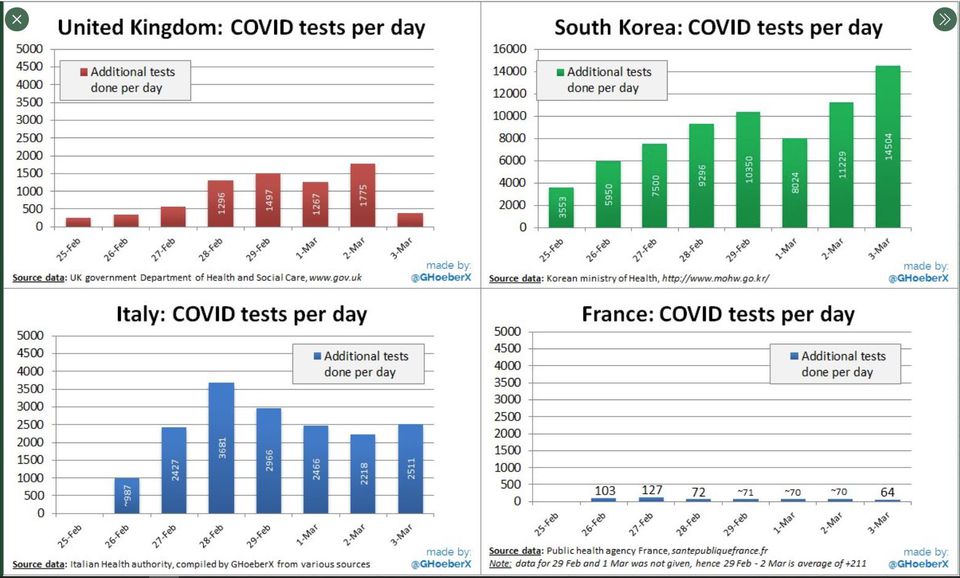
Quarantine incoming people
One very obvious measure Governments can take is to quarantine and test every single person who steps into their territory, especially if they come from a country which is “at risk”. It is simple logic. It might be hard to swallow for people who think that borders shouldn’t exist, but we are not talking about ideology here, we are talking about human lives.
Treating
China has given us some possible treatments as mentioned above. Let’s use them! Let’s test them extensively. What do we really have to lose?
Confining populations
In the absence of very quick measures early on, many countries started implementing confinement measures for their population. And those who haven’t yet will come to that point pretty soon. At a certain point of the progression of the virus, there is unfortunately no other choice if you don’t want the healthcare system to be totally taken down. But again, this is only the result of bad political decisions early on. They probably wanted to avoid paying for mass inexpensive testing.
China has proven that very strict confinement measures do work. They are not fun. But they work. However, I spoke about “strict” measures. Not just joking around like the French Government saying “guys, we’d really appreciate it if you stayed at home. Oh, by the way, just fill in a paper and sign it yourself if you plan to go out. Ah, just forgot. Of course you have to go to work and gather in the metro and the office.” What a joke. I expect soon the next move will be to develop a self Covid-19 test assessment auto-signed on a piece of paper.
When things obviously get out of hand in a country or a region, you want the confinement to be as strong as possible, otherwise it will NOT work.
Bracing for Impact
In the absence of early testing and detection, the whole healthcare system in most countries will be impacted by a tsunami never seen before. We have to act very quickly, as Italy has shown us and as France is starting to experience. But this is only the very beginning. And most countries are not responding or taking measures that are totally inadequate compared to the wave which is coming. We need to act NOW. It is already too late in many places. And acting only one single day late results in 40% more infected people.
Subsidize
We don’t want to see a major failure of the whole net of small companies all over our countries. Restaurants. Small shops. Many will fail if we don’t help them. All those small local companies already struggle on a daily basis and need to be supported during this very difficult situation. They generally have very little money in their bank accounts and can’t resist months without a working business. They need all the help we can give them. In the end, Governments will have to pay the price of their inaction.
Saving the Economy vs Saving People
We have seen Western governments hesitating in the last few weeks: should we confine everyone now and kill the economy or let this whole thing run on its own and hope for the best?
By wavering so much, they have obviously chosen to sacrifice the lives of people to “save” the economy. Such a stupid decision! The more they wait, the more the economy will be hurt on the long term. We could have taken very heavy and strict confinement/testing/treating measures from the very start and not be hit so hard. But now, we are like a huge ocean liner that cannot turn anymore. We will hit the iceberg.
This is the price to pay for greedy and coward politicians who only think about the next election. But they will lose these next elections, when the scandal of their (non) actions will come out. Nobody will be able to hide the tsunami, whatever they do.
Treatments and Healthcare
Massive urgent investments need to be done to build and fortify the healthcare systems. We are running out of time. However, money can be created in a snap in emergency situations so money shouldn’t be a problem. We have heard in the last few weeks astounding announcements, tens of billions of euros suddenly “unlocked” (why were they “locked” before???) to help with the crisis. Help is urgent.
Individuals
Individuals also need support, especially the most fragile ones. In France, it is reported that homeless people have been fined for not “staying at home”. WHAT? Again, this is the result of years (should I say “decades”) of cutting budgets, making the poor poorer and the rich richer.
Many families are generally struggling to finish every month outside of a pandemic situation. With less income, they could crumble in no time. The States need to acknowledge that, if they don’t want starving and angry crowds coming to their windows, they will have to subsidize. Massively.
Revisiting economic models
We WILL have to revisit our economic models. The current one, based on debt, is not sustainable. We have given the power to create money to banks, giving them the power to choose for us how society should be built. It is not a surprise that they chose to build tanks and harmful but highly profitable pesticides over healthcare systems, schools or retirement homes.
What we can do… as Individuals
STOP SMOKING. NOW!
From everything I read, smoking is an extremely aggravating factor. If you are a smoker and don’t want to be affected, you should stop smoking NOW. I have even come across a vaping site recommending to stop. You’ve always dreamed to stop. Now is the strong incentive.
Should I freak out?
The current situation is causing a lot of uncertainty about the future. It is actually a great deal of stress for many people who find themselves in difficult financial situations.
However, freaking out is the worst thing you can do. Stress lowers your immune system and is opening the door to all kinds of illnesses, and not only Covid-19: heart failure, digestive problems, respiratory problems, you name it.
Remember that 80% of the people who catch Covid-19 end up having a flu or even no symptoms at all. Actually, it might be more than 80%, we can’t be sure. But to pass it smoothly, you should NOT let your immune system flutter.
Reduce your stress levels. Watch comedies, laugh. Do something you are passionate about as much as you can. Play games with your family. Isn’t it what “staying at home” should sound like?
Just a friendly reminder
Also remember that in many cases, hard times have brought social advances. In France, there are many instances of this:
- 1789, the French Revolution, which sparkled because of widespread poverty,
- 1816 all over Europe and the East Coast in the US, the eruption of a volcano in Indonesia has been the trigger for a lot of very positive reforms for the people,
- 1848 in France, poverty caused the people to rise up,
- 1870, France lost the war against Prussia, triggering many new advances in the following decades – at a cost, such as the burning of the majority of civil records in Paris,
- 1936, when so many social advances were made during the economic crisis period,
- 1945 after the war, paving the way for 30 prosperous years…
Maybe it is time for a new change. Granted, the transition period might be quite hard to get through.
But, don’t freak out, things might actually turn okay. It is useless to worry for a future which is so uncertain and on which we have no grip.
On the other hand, not freaking out doesn’t mean you shouldn’t take measures to protect yourself and your loved ones. Just protect yourself. It might be a little of a burden to stay at home. But far less than ending in the hospital. Help others when you can.
Difference between panic and logic
How can you make the difference between panic and logic?
When people panic, they react erratically. They rush IN CROWDS to fight for toilet paper while the most sensible thing to do is to avoid crowds no matter what. They attack people wearing masks whereas the only sensible thing to do is to stay away from them. Their brain doesn’t work logically anymore as they are overwhelmed by emotions.
Stress reduces brain activity. When you have to run away from a lion, you don’t need your brain much, you only need your muscles. So stress causes the brain to get less oxygen, since it is now needed by muscles all over the body to run. This in turn makes your brain far less effective.
But you don’t need to run to escape Covid-19. Don’t panic, it will only harm you.
Social distancing
Keep yourself physically away from other people when you can, especially if you are at risk. It is the most sensible thing to do. And if you are not at risk yourself, remember it is only statistics, and if you have a tiny bit of compassion for your fellow humans who are at risk, just avoid spreading the virus whenever you can.
With current technology, this doesn’t mean that you should cut all relations with everyone. On the contrary: take the time to call this aunt you haven’t been speaking with in a long time.
I am totally astounded to hear some people, including so-called “experts”, claiming that social distancing is useless. To quote a comment I read recently, “advising people not to wear a mask because people around them don’t look sick is as stupid as advising not to wear a condom with strangers because they don’t look sick”. Come on, people, be logical. 🙂 Be the match that extinguishes the fire.

Wash your hands

Should you really wash your hands? YES!
Should you use hydro-alcoholic solutions to clean your hands? Is it preferable to use soap?
I personally use hot water and soap, which I believe is the most effective way of getting rid of any virus (and anything else, really!) that could stick to your hands. It is especially useful against Covid-19, whose fat envelope can easily be destroyed by soap and hot water. Without that protective envelope, its RNA is useless and it is effectively destroyed.
If you really wish to use hydro-alcoholic solutions, then choose one with at least 70% alcohol, since lower alcohol contents is not effective enough. I personally don’t like those much because they tend to dry my skin, which has already a tendency to be extra dry.
Don’t shake hands
Maybe it’s time we recognize the power of the Asian bow.
Shaking hands generally expresses a confrontation. Who will be dominating the handshake? We witness heads of state battling in ridiculous theater-like scenes with never-ending handshakes. Fortunately, ridicule doesn’t kill.
Maybe it is time Westerners acknowledge the respect carried in the Asian bow, in comparison with the military handshake.
Don’t touch your face
This might be the most difficult thing to do, as it is a natural reflex. We constantly touch our faces, especially to touch relieving points and ease stress. Find other ways around the stress, but avoid especially touching your nose, mouth, and don’t scratch your eyes (that’s one of my bad habits – working on it!).
Protective gear

Gloves
Gloves may sound overkill in your daily life. But when it comes to public transport, for instance, it may be wise to wear some if you have any. This is again up to you to evaluate the degree of protection you want to surround yourself with without losing your own sanity. If you don’t wear any, remember not to touch your face AND to wash your hands often. The very best is not to go out altogether, but I do understand that not everyone has a choice.
Maybe the number of dead people in the coming months will change your vision of protective gear, as it did for people living in Wuhan. Pictures of the market there before the epidemic show that nobody was wearing a mask back then. It has changed quite a bit now. What seems overkill to you today might seem the bare minimum tomorrow.
Masks

No. Not this type of mask. 🙂
If you have masks, you should wear them, although the efficiency of masks is a complex matter.
Surgical masks
Surgical masks are mostly effective to protect others when you are sick. For a sick person, wearing one stops all the contaminated air and droplets from spreading all around you, which is a good thing for others. Actually, anyone with flu symptoms (even if they don’t have Covid-19) should wear a mask, it is simple common sense.
Here is a little animation that shows why masks are important (even if it is not a surgical mask, the effect is similar):

Besides, they also protect you against infected people, to a certain degree. If you are not evolving in a highly contaminated environment (such as a hospital), then it is already better to wear a surgical mask than nothing. As the virus tends to stick to water droplets or particles that are in suspension in the air, those particles will stick to the mask rather than entering your lungs, which is exactly what we want.
FFP2/N95 masks
Of course, FFP2/N95 masks and their equivalents are much better and are the only solution to get protected effectively. Note that most “anti-pollution” masks (you know, the ones cyclists wear) are also very effective, as well as masks used in the construction industry.
FFP3 masks are overkill if you are not a health professional, but of course if you have one, “he who can do more can do less”.
Homemade masks
I know that many people are acting out of kindness. However, beware of homemade masks, especially those 3D-printed ones. I do have a 3D printer at home, but I didn’t print a mask. Why? Because 3D printing generates holes that are big enough for the virus to get through. For such a mask to be really useful, it needs to be very carefully made:
- every person has a very different face, so although flexible masks can fit any person’s morphology, 3D printed masks are very rigid, and the outside shape should very closely fit the person’s face, which is certainly not an easy thing to do,
- the whole contact surface should be coated with some flexible yet impermeable material to make sure the fit is perfect,
- after printing, the whole surface should be carefully sanded, filled and coated then painted to make sure no holes are left,
- make sure the filter hole is big enough to generate sufficient air flow to breathe,
- make sure that the filter replacement system does not suffer from leaks,
- etc.
As you can see, printing a 3D mask at home is not as simple as printing a toy to decorate the living room. Besides, if the mask gives a false sense of security while not protecting correctly, it can become very dangerous.
The same can be said about homemade textile masks. The thicker masks with thinner threads are best, but then there is the question of breatheability. Not an easy compromise to make at home.
… a little video example
A little demonstration of the efficiency of masks:
Special notes
Note that, unless you are at risk yourself (or someone near you in your confinement area/apartment/house), healthcare professionals are probably much more in need of masks than you are. There are many people in France (including people working in healthcare, but not directly involved in fighting Covid-19) who donated their own masks to nurses and hospitals.
However, in countries which test very little for Covid-19 such as France, anyone around you could be a carrier, and you might be a carrier yourself unknowingly. Thus I believe everyone should wear a mask if they are going to get in contact with other people.
Masks and social pressure
Wearing a mask can be laughed at in some countries, such as France. Although social pressure can sometimes be a bit hard to sustain, just let them laugh. If you wish to, you can explain to your friends (but why are you seeing them anyway, shouldn’t you be calling them on the phone instead?) that you wearing a mask doesn’t mean that you:
- are a health freak, especially in this particular period,
- are sick and contagious,
- scare from them.
It is just a basic precaution that can save lives – the ones of your own environment and the ones around others. It is a win-win action.
People who laugh today will thank you in a couple of weeks.
“Masks kill because of CO2 intoxication”
You might have heard this sentence.
But medical personnel wear them all day long and they don’t drop like flies. Besides, as far as CO2 is concerned, one common bad habit is to breathe through the mouth. This causes hyper-ventilation, which in turn can cause a number of serious problems: asthma, other respiratory problems such as sleeping apnea, but also other problems such as diabetes.
Besides, there are many other features of respiration that enable us to do wonderful things. If you don’t know him already, I’ll advise you to look for Wim Hof, aka “Iceman”, the man who tames the ice.
Wearing a mask raises the question of breathing… it is time to learn how to breathe from the nose and close our mouth, even through a mask. Here is the advice of someone who has been treating asthma patients by regulating their breathing:
Clean infected surfaces
Potentially infected surfaces (door knobs, tables, etc.) can be cleaned with bleach, alcohol, hydrogen peroxide… it doesn’t take long to do some small cleaning and it can save lives. Just don’t drink those, they could disinfect you instead of the virus. 😛
Ultra-Violet (UV) light is also a very powerful disinfectant, busses in China are reportedly disinfected with UV light. Sunlight is typically killing viruses very easily. However, be aware that plain glass generally blocks UV light, so if you want to disinfect anything by leaving it under the sun, don’t leave it behind a window, expose it to direct sunlight.
!!! WARNING !!! UV lamps can cause irreversible eye damage even after a few seconds as well as skin cancer. DO be careful if you buy any.
Time is also a powerful weapon, as the virus dies out in the absence of a host. Although the exact timing for its survival is not 100% certain, especially as it mutates and spreads. Stay on the safe side.
Beware of compulsive behaviors!
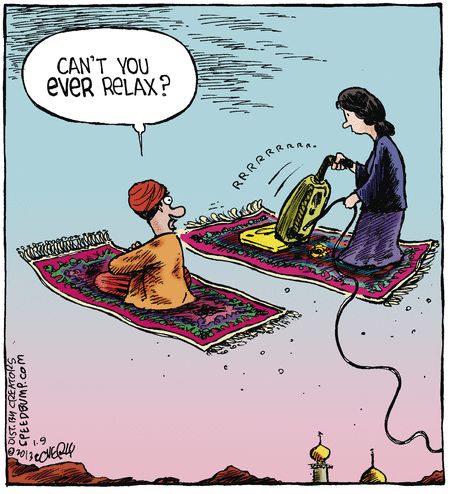
That said, do beware that cleaning, especially in situations of fear, can become compulsive. Just watch yourself and make sure that all your attention is not directed toward extreme cleaning. If you have been in front of the sink for the last 20 minutes cleaning your hands, maybe it’s time to stop!
How to deal with confinement

Negative impacts
Confinement may not be easy for many people. Actually it resulted in a spike of divorces in China. In general, being confined in a limited space with other people has always been described as a difficult time. Sailors know very well about this.
Note that if you are confined with a violent spouse, NOW is the time to speak out and contact your local emergency help. Leave NOW. Confinement WILL aggravate things.
Positive impacts
On the other hand, if you are in a truly loving environment in your household, then this might be an excellent opportunity to connect with your loved ones further than usual. Confinement might actually not be a bad thing if you know how to take it.
At other levels, I am seeing that this situation results in an explosion of creativity.

Do something you love. I saw this meme recently, let it inspire you:

Recently, some people have been 3D-printing valves for hospitals in France, making it possible to treat more people at once. People have been sewing masks (although those masks are not really sufficient for healthcare professionals, yet it can be useful to them and their surroundings).
Dealing with it
If you do suffer from being quarantined, please try out the following video. I know it might look ridiculous at first sight. Just try it, I dare you. It will take 8 minutes of your time but this will relieve you from the stress of confinement for the next few months! You can’t miss that opportunity! Wash your hands before doing it!
As for teleworking, it has positive and negative aspects, it all depends how you take it.
If you are sick, protect others!
Do I really have to repeat that, if you are sick, you SHOULD stay at home. If you really have to come out to go to the pharmacy, wear a mask if you have one. Cough in our elbow to prevent contaminating your hands. Hands touch everything everywhere. From your credit card to the counter of the pharmacy. Ah. Avoid touching that pharmacist’s counter if you are healthy. Do you really need to scrub it with your fingernails?
Keep your immune system high!
Remember, 80% of infected people have mild symptoms, or even almost no symptoms at all. Thanks to our immune system, this virus doesn’t kill us all. 🙂 It is quite ironic that my previous post was titled “Incredible Healing Abilities”.
Do whatever you can to support your immune system. Stop eating junk food. Cook and eat fresh vegetables and fruit as much as you can. Wash them, you don’t know who manipulated them before you. Quit smoking. Quit drinking (alcohol, of course… drink water!).
Remember that, be it vitamins or drugs, these should be taken in moderate amounts. Taking more vitamins will not help, it might actually be very detrimental. Be reasonable.
Vitamins
Disclaimer: again, I am a computer doctor, NOT a medical doctor. Besides, following the advice bellow does NOT prevent you from getting infected or even from death. If you are experiencing symptoms of Covid-19, call your healthcare emergency line or local doctor for medical advice.
However, following these basic guidelines will strengthen your immune system and help your body fight with anything that comes near it. Be it Covid-19 or anything else.
Here are the vitamins I would recommend. It is more difficult to give dosages as everyone is different. Do your own research. Seek advice from nutritionists.
Vitamin C
First of all, vitamin C is essential in my eyes. Although some doctors tell that it is not useful, I believe it is one of the most important vitamins you can take.
Vitamin C is especially essential when getting sick. During an infection, T-Cells (white cells) are heavily oxydized by the pathogens they attack and swallow. Therefore, they load themselves with vitamin C, which is a powerful antioxydant. Of course, if vitamin C becomes scarce, T-Cells die faster, which enables the infection to spread faster as well.
It is reported that Chinese doctors have successfully used high levels of intravenous vitamin C (eg. with a syringe!) to cure Covid-19 patients. Not a good reason to infuse yourself with an orange-vodka cocktail, though. :p
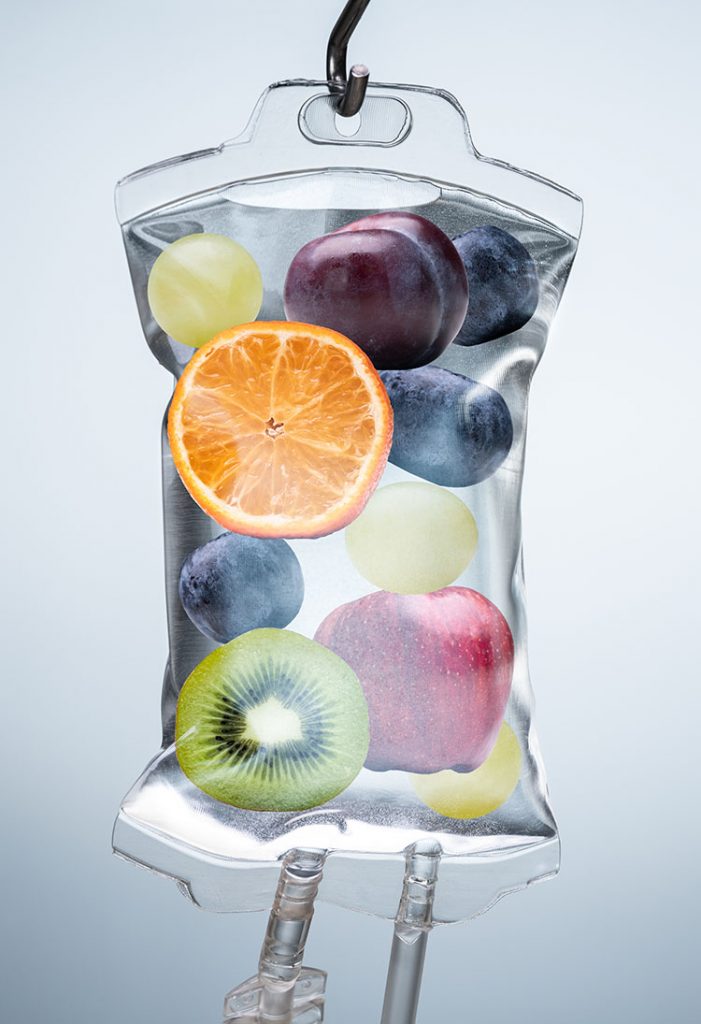
Vitamin D
Next comes vitamin D. Most people, especially in the Western world, lack vitamin D. In these very special days, you will not be going out (will you???), and your body will not get the sun it needs to synthesize vitamin D. So it is especially relevant these days. Besides, vitamin D has been shown to prevent acute respiratory tract infections in general… and Covid-19 in particular!
Magnesium
Along with vitamin D, you should also take magnesium. This is because vitamin D depletes magnesium stocks from the body. That’s actually one of the reasons why you are so tired when coming back from the beach or a long day outside, you simply need magnesium which has been depleted by the excess vitamin D produced by the exposure to the sun.
However, you should not take vitamin D and magnesium together as they have opposite effects that could make you feel strange. Take vitamin D in the morning: it will give you some strength for the day. Take your magnesium in the evening: it will help you sleep. Note that all “magnesium supplements” are not equal. Do some research if you don’t know this field.
Besides, magnesium will help with the anxiety you might have related to the current situation. It has been shown to help not only with anxiety but also depression. Quite useful in these confinement days, don’t you think?
Zinc
Zinc is another supplement that you could take as a temporary cure these days, although you shouldn’t over do this one as it can be highly toxic if taken for too long and at too high dosages. Again, do your own research.
Vitamin B
Vitamin B, especially vitamin B3 and B12, plays a big role in the immune system. Some new research suggests that those can help at many levels: prevention, cure, and help in recovering after Covid.
Drink hot drinks
In all seasons, it is always important to drink water regularly. The throat’s mucus membrane dries very fast due to the constant flux of air passing through it at every breath. However, mucus membranes need to be moist. When they are dry, they cannot fight efficiently against all attackers they constantly meet: bacterias, viruses, pollens, etc. So it is important to drink regularly, in small quantities, to keep the throat hydrated.
Additionally, viruses generally struggle in high temperatures. This is why flu epidemics generally thrive in the winter, when your respiratory system is colder because of the cold air. Note, however, that there has been a fake info claiming that SARS-CoV-2 cannot withstand temperatures as low as 26°C (78,8° F). This is ridiculous: the body is normally at 37°C (98,6° F) so how would it survive then?
However, I believe that drinking warm liquids can help dissolve the virus’ protective shield. It can also detach it from the throat and prevent its growth there – and it is dissolved as soon as it meets acid in the stomach.
Note that the body fights viruses with fever for a simple reason: heat weakens the viruses while strengthening the immune system. If you have a fever (not exceeding 40°C – 104° F), lowering it is not a good idea. It is the body’s normal reaction and fighting mechanism against a pathogen. Let it do its job. However, if the fever does get too high, it will become detrimental. Everything is about balance.
Exercise
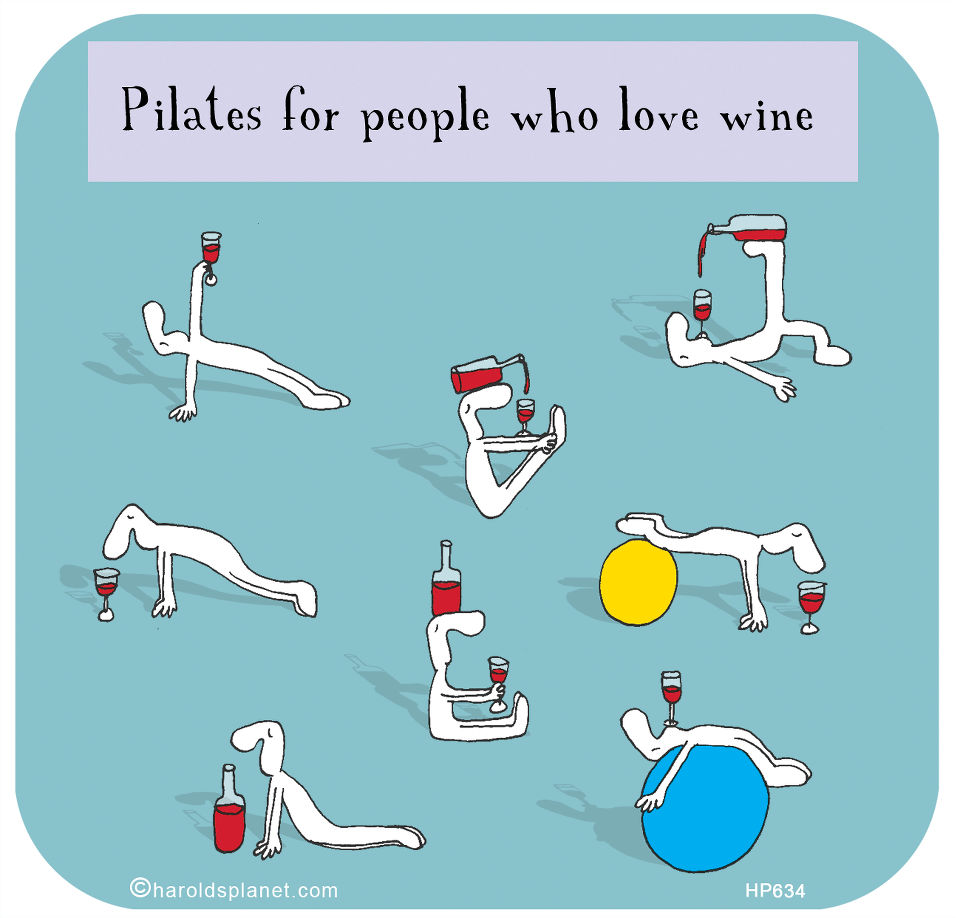
Just do it WITHOUT the wine. Alcohol should be reserved for cleaning things. As a matter of fact, a very famous French company that generally makes alcohol for drinking donated 70 000 liters of alcohol to make hydro-alcoholic gels. 🙂 But remember, while alcohol kills germs and viruses, it also kills your immune system and your brain cells. It also weakens your liver, which these days need to be functioning as well as possible since a weak liver seems to be a risk factor for Covid-19.
Sleep
Sleep is essential for your immune system to work correctly. However, in these troubled times, it can become difficult to sleep due to anxiety.
Here are a few tips you can try:
- make some sleeping tea (lime tree is very potent) before going to bed,
- taking magnesium supplements before going to bed should help, and zinc can help that too,
- use EFT, I know I’m repeating myself, but this is a very effective and free technique to deal with any problem, and it works in minutes without any side-effects,
- try to meditate before going to bed. I remember that my son came to an age when he had trouble sleeping at some point. He started meditating for 10 minutes before going to bed: problem solved,
- you can also listen to some calm music (instrumental is best, songs can sometimes be very depressing) before or when going to bed, it will relieve your stress as well,
- learn about astral projection and lucid dreaming, even if it sounds like “New Age Nonsense”, those promote loosening up your grip on “reality” and may help you as well.
One last word about sleep: STAY AWAY FROM SCREENS (computer, tablet, smartphone) before going to bed. Our brain is wired to wake up when our eyes are bombarded with strong light, and to go to sleep when it gets dark. Keeping yourself in front of a screen is telling your brain: “Hey, it’s daytime, stay alert!”
Lower your stress levels
Learn how to meditate. Practice Cardiac Coherence (here is one, for instance, but there are many others). Use EFT and tap on your traumas.
If you are a musician, dust this instrument you haven’t touched in years. Make sure that your family is okay with that. 🙂 Paint. Draw. Dance with your partner in the living room.
Look at comedies, including standing comedies. Laughter is extremely important to maintain your psychological balance. It also promotes good physical health.
Remember that all people working in the entertainment business, especially the “little ones” who don’t benefit from the protection of a huge company, are heavily impacted by the crisis, as their main revenues come from concerts, especially since their digital creations can be widely shared for free (legally or not) on the Internet. They generally have crowdfunding accounts. If we all give the ones we love just 1 $/€, that would certainly help them tremendously – as they help us with the material they share with us in these hard times.
Essential oils
Some essential oils are famous for their antiviral actions. This does NOT mean that you should rely only on them against any virus. If you are sick, get medical help.
Also note that if you are not familiar with essential oils, I would certainly not recommend you to jump into them. Although they are natural extracts, they can be very harmful if used incorrectly. Stay away from them if you are not familiar with them, or free up some time to learn how to use them.
Here is a list of oils you can use, especially against viruses (others can be used as antibiotics):
- Tea Tree is one of the most effective essential oils I have been using quite successfully,
- Eucalyptus is very famous for opening up your nose, and it does have very good antiviral effects,
- Lemon oil is full of vitamins (as is the fruit – if you do have access to lemon, don’t hesitate to make lemonade with it, I personally have been drinking a glass of lemon+water every morning for a long time, and I believe it has stopped me from catching colds and other diseases).
There are many others. If you are familiar with them, don’t forget to use them!
Placebo effect
Can drinking cow urine protect you from the virus? It might seem ridiculous at first sight. Don’t underestimate the power of the placebo effect. Believing strongly that you will not get sick or will recover easily thanks to some of your actions and beliefs is a powerful and underestimated tool. It somehow strengthens the immune system.
However, some practices can be detrimental. Typically, although urine is generally considered sterile, there are some cases where it can carry germs or infectious material, especially when drinking another living being’s. The same goes for mass praying. Praying is known for its positive effects, but if you’re going to mix the germs with others while doing it, it becomes counter-productive. So endangering behaviors are not okay even with the placebo effect.
Nocebo effect
Similar to the placebo effect, this happens when your negative beliefs can bring actual negative physical symptoms. For instance you can read this scientific article which reports that a youngster got into actual hypotension after taking 29 antidepressant capsules, needing hospitalization… but when he learned that those were actually a placebo (eg. inactive pills), his blood pressure immediately went back to normal.
In a study in 1983, doctors gave cancer patients a placebo chemotherapy, telling them that the common side-effects were loss of hair and nausea. Although patients believed the treatment had started since they were taking pilles, it hadn’t actually started. However, 30% of them lost their hair and 56% reported having nausea.
It is reasonable to assume that if you deeply believe that you will die if you catch this virus, you are lowering your chances of survival compared with the opposite belief that your immune system will protect you, even if you are globally at risk. Not all old people die, not all smokers die, not all obese people die. More than 90% recover, even in the high risk people. 9 out of 10.
You can control your own beliefs, it is in your hands, and it can play a significant role.
Should I go to a doctor or the hospital if I feel sick?
NO! This is the best way of spreading the virus if you have it, or get it from others if you actually have something else. Remember, hospitals are the places where you grab illnesses because there are many other sick people around. Call your local practitioner or health emergency number if you think you are sick. Be reasonable. In these times, everyone with a mild cough starts freaking out. Don’t.
Should you scare from your child?
Children, especially age 1-10, are not so prone to getting Covid-19. I believe this is because their immune system is strong enough to kick out the disease very rapidly. However, I would surely recommend to keep them at home until the pandemic ends. Schools are well known to be a big melting pot of germs. 🙂
Should you scare from your pet?
 (that’s our cat, by the way, stood there like a good kitty for the photo)
(that’s our cat, by the way, stood there like a good kitty for the photo)
Science
Although at the beginning we thought that pets couldn’t catch the virus, it appears that cats, dogs and some other pets can catch it. Cats, in particular, can not only catch it but also infect other cats. Some researchers even believe that the current pandemic may have been initiated by stray dogs.
However, the transmission rate between cats and humans seems to be extremely low. Besides, cats and dogs don’t seem to get sick very badly, thus they probably have a very low viral charge. If you REALLY want to be on the safe side, just don’t lick your pet’s nose as you normally do. 😛 And cats staying at home should not catch anything, of course. However, if YOU are sick and stuck at home, you should stay away from your pets as you could contaminate them.
Be responsible
Just don’t be a TOTAL M***N, don’t abandon your pet because of the current situation. Note that the rumor that many people have abandoned their furry ball in Italy or France doesn’t exactly seem to be true. The truth is that, as people are quarantined, they don’t go to shelters to get a new pet. So shelters still have incoming pets, but they can’t give them to new owners. And this is a problem. Stray animals may also suffer from people being quarantined and not able to feed them.
Even if your pet has a very low chance of getting ill, just beware that the hair and paws of pets can carry the virus. If you really scare or are at risk, you can gently clean your pet’s paws after having a walk outside. NOT WITH BLEACH, as some people have done. Would you clean your hands with bleach? Of course not. Your pet’s paws deserve to be treated as gently as your own hands. And clean YOUR hands, you dirty human! Also try to avoid letting strangers pet your dog on the street.
Should I stock toilet paper?
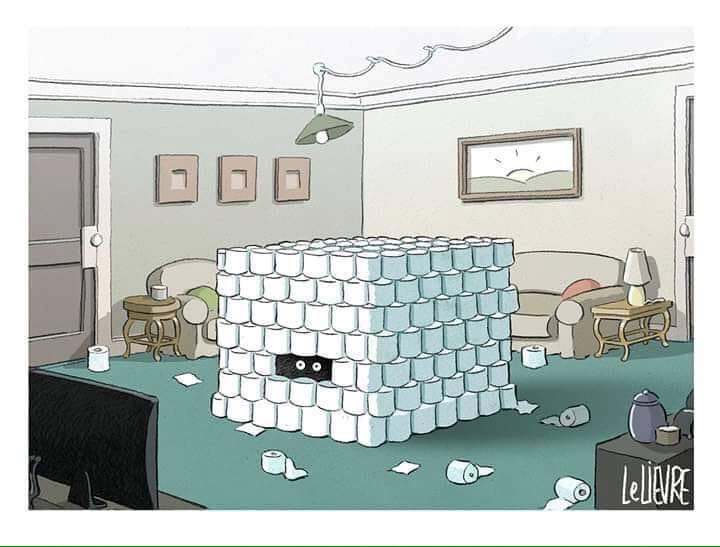
Nope. You can’t eat toilet paper. I’m not sure how this hysteria started. Maybe from that Hong Kong news in early February. And anyway, there are other ways. Don’t fight over toilet paper.
Should I stock rice/pasta?
At least, that makes a little more sense than toilet paper. Just don’t build a castle with it. Just be reasonable. Panic buying will result in others not having food although there is currently no reason to panic. They in return will panic-buy as well and YOU will find yourself without food later. Unless of course you can buy every truck that comes into your town first.
Besides, pasta without sauce or salt is a quite depressive thing to eat. Keep some spices as well (curry, pepper, garlic, etc.). Those are also good for your immune system.
Should I stock anything, really?

You should always have a little stock. In our current world, distribution systems are working with very very little stock. The first cough in the whole chain can bring it down for a little while. So something around 2 weeks stock is the minimum. All the time. Even without a pandemic running around. Some people believe 2 weeks is not even close and that you should stock enough to survive for very long periods of time. I personally don’t think it is a good strategy. In the case of a catastrophic event, networking is much more powerful than keeping your own little stock to yourself. But that’s another story.
Will the summer heat kill this thing?
Frankly, we have no idea if it will.
In fact, I have bad news if you believe it does, because I have some evidence it won’t. Malaysia, Iran, Southern Brazil, Bangladesh, Qatar and Saudi Arabia, which are warm regions, also see an exponential spread of the infection with no sign that it is less serious there. And guess what, in Australia, it is also raising exponentially. Wait a second. It’s SUMMER in Australia right now.
Besides, MERS is also a corona-virus and it evolves mostly in hot countries.
Only time will tell.
Will this disease come back?
Although nobody has a crystal ball, it is not difficult to say with confidence that it will.
Given its stealthy nature, it is unlikely that it will totally disappear, as it has so many opportunities to hide. There will be new epidemic waves in places which already experienced the epidemic. These new waves may be purely local or imported from other countries.
Hopefully, we will be better prepared to face those new waves in the future, both thanks to the populations waking up and also to medical cures and knowledge that will help prevent disasters. Asian countries that have been strongly impacted by SARS a decade ago have reacted to this crisis in a much more timely manner than European countries, which have no experience of such epidemic in the last decades. Hopefully, this will teach us all a lesson.
Does 5G technology cause the spread of the virus?
There are some people who believe it does. While I am personally against 5G for many reasons, I do not believe it has much impact in the spread of this particular disease. Some countries experience exponential growth but do not have 5G technology, such as Iran or Malaysia. So that claim can be easily dismissed.
As an individual, be aware
This is a great time for you to wake up. Read about how the financial system works. You will realize that all the assumptions you have been making are wrong on this topic.
Beware that politicians will use this crisis as an opportunity for them.
As an example, before this crisis, Emmanuel Macron was in deep trouble. The yellow vests had been behind his neck for more than a year. He was facing a huge backlash during the municipal elections. He was rushing to pass bills using all the non democratic tools he had at his disposal.
Then the sanitary crisis hit.
And suddenly, people can’t protest anymore. But he maintained the elections, knowing that many people wouldn’t go vote out of fear. And now he is using the crisis to pass bills to suppress rights. Dirty politics.
Don’t get me wrong. I may not like him, but his “opponents” are not better than he is. They would have probably used the crisis to their own advantage as well.
We have to stay put and observe. No sanitary crisis should be the pretext to switch to a more authoritarian state.
Final note
If you spotted any mistake in this article, do let me know in the comments in a constructive way, preferably with non controversial sources. Please stay calm and polite as I will immediately delete any offensive comment (they are moderated anyway so nobody will see your rants 🙂 ).
And please, if you have any sourced evidence that I am wrong, I would love to be proven wrong.
Stay safe. Protect others. If you believe that this article can help others, share it around you!
 On observe bel et bien une « deuxième vague », qui pour l’instant ne dépasse pas vraiment la grippe de 2016-2017 (l’épidémie la plus meurtrière depuis au moins 20 ans, avant la Covid) à l’échelle nationale.
On observe bel et bien une « deuxième vague », qui pour l’instant ne dépasse pas vraiment la grippe de 2016-2017 (l’épidémie la plus meurtrière depuis au moins 20 ans, avant la Covid) à l’échelle nationale.


